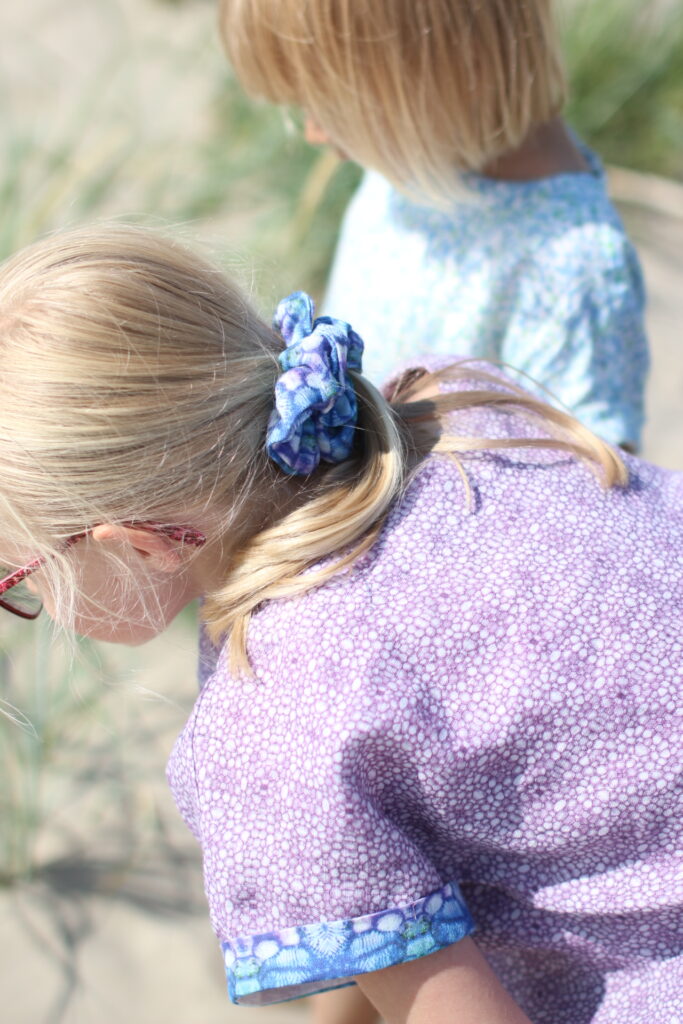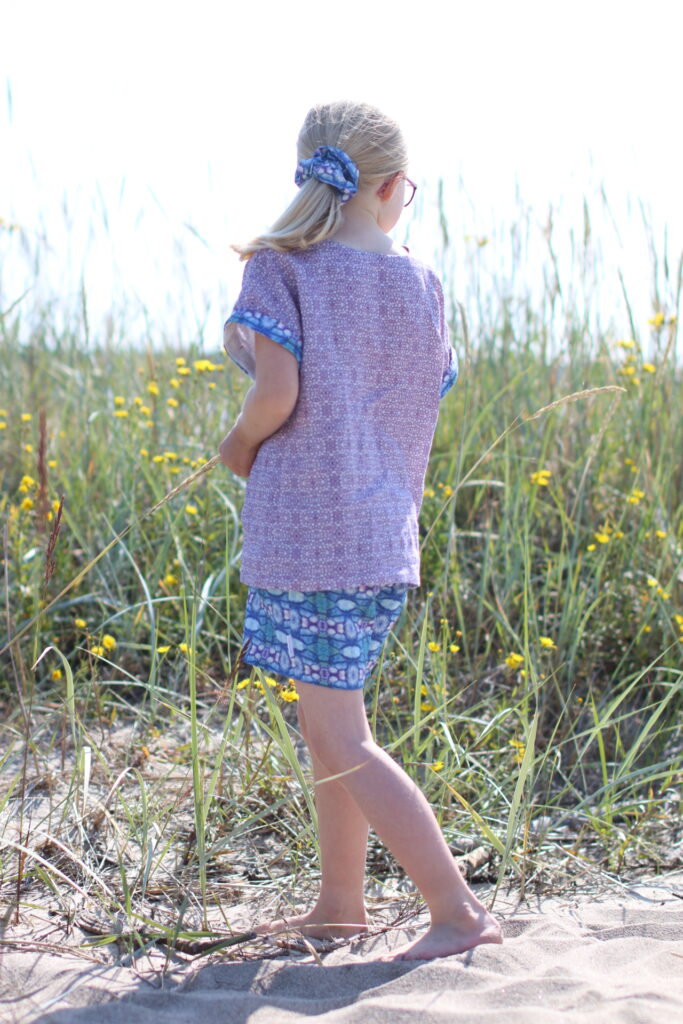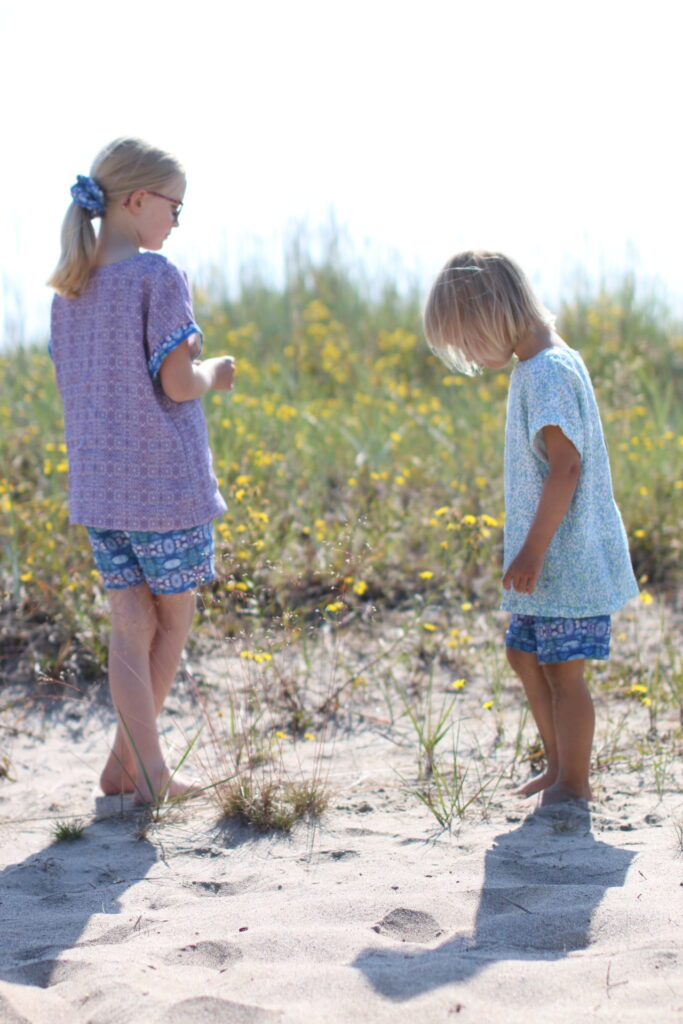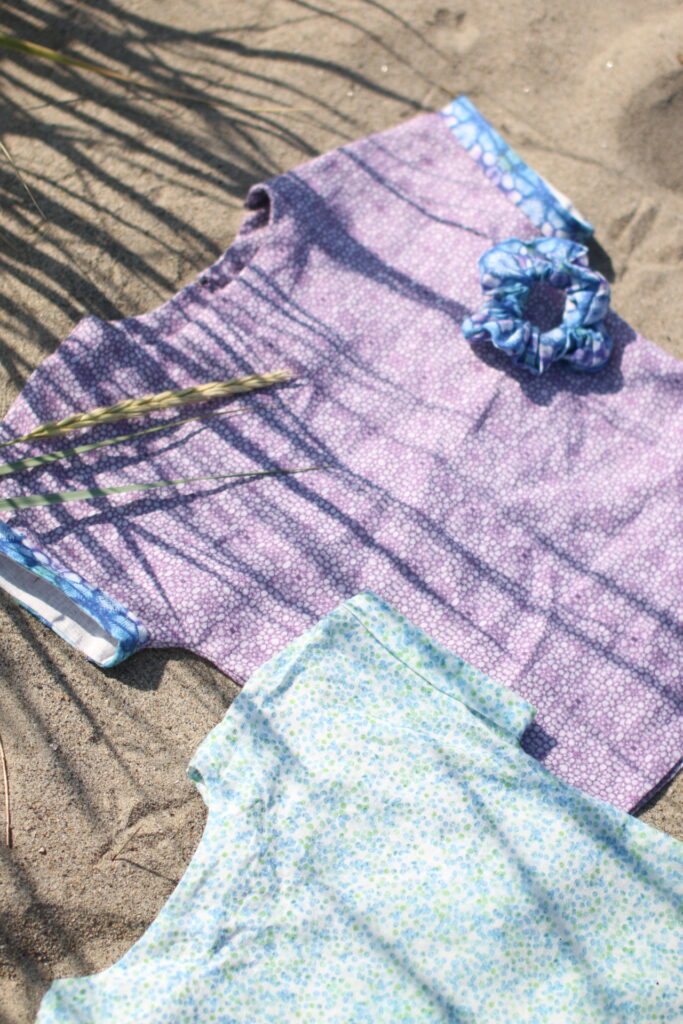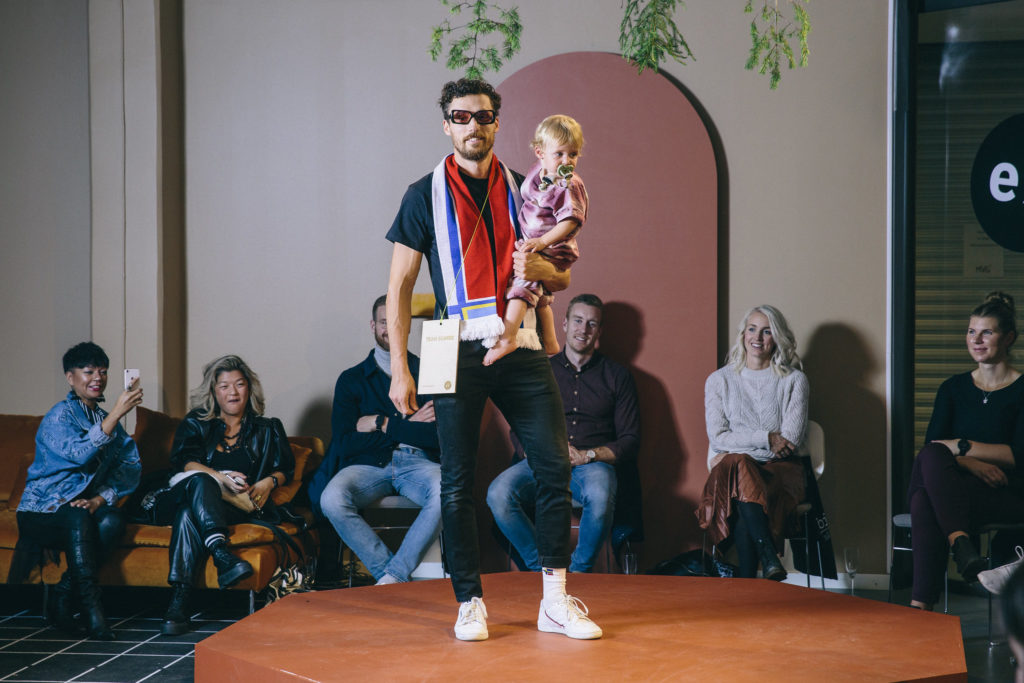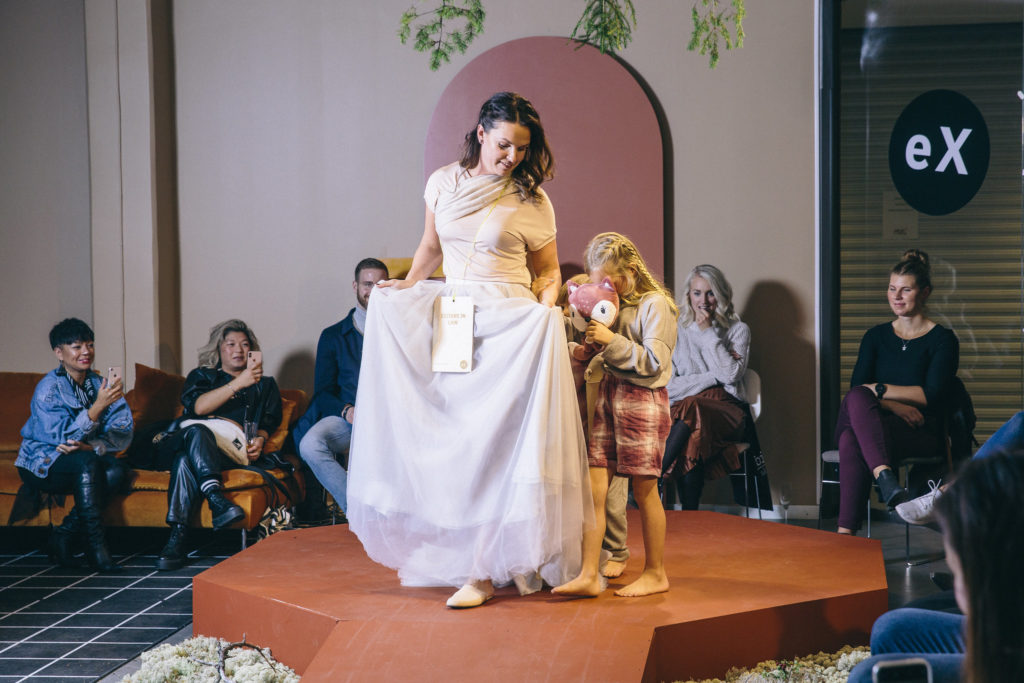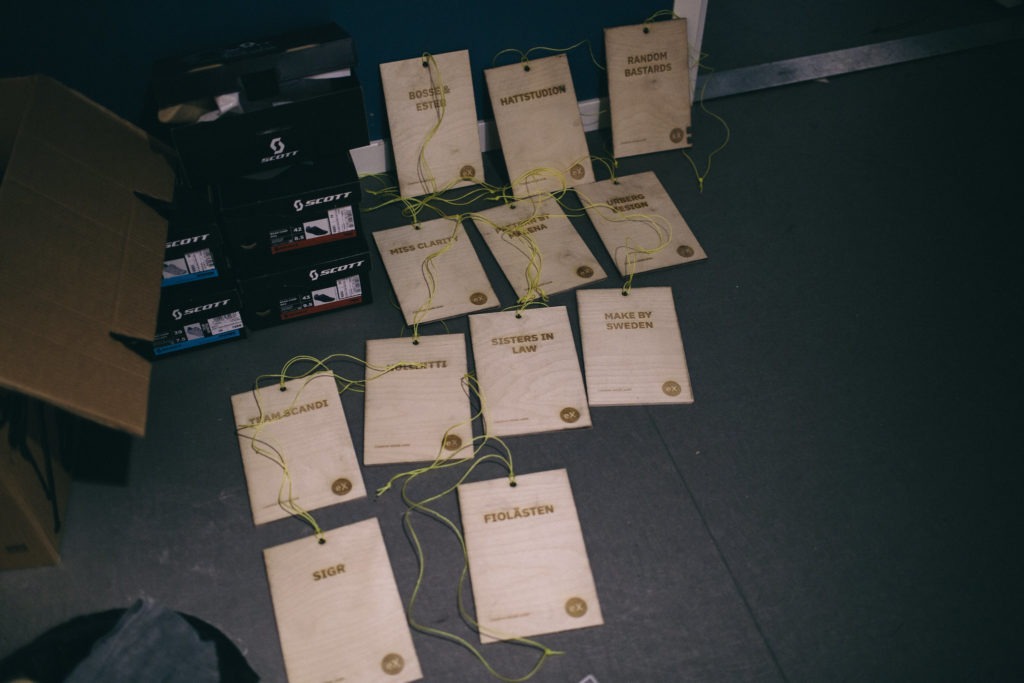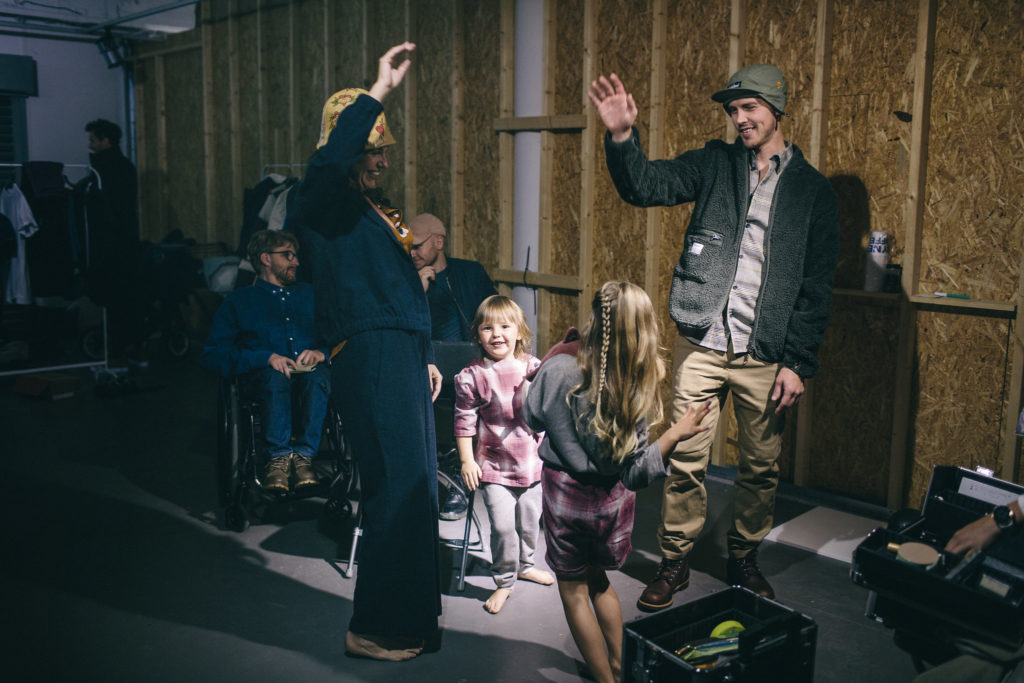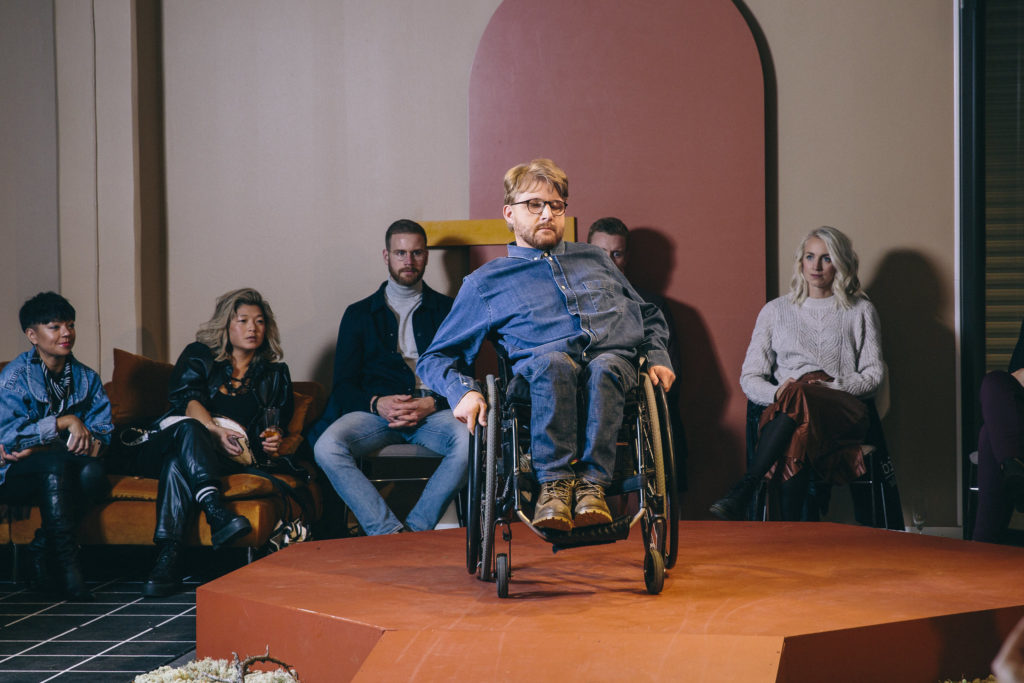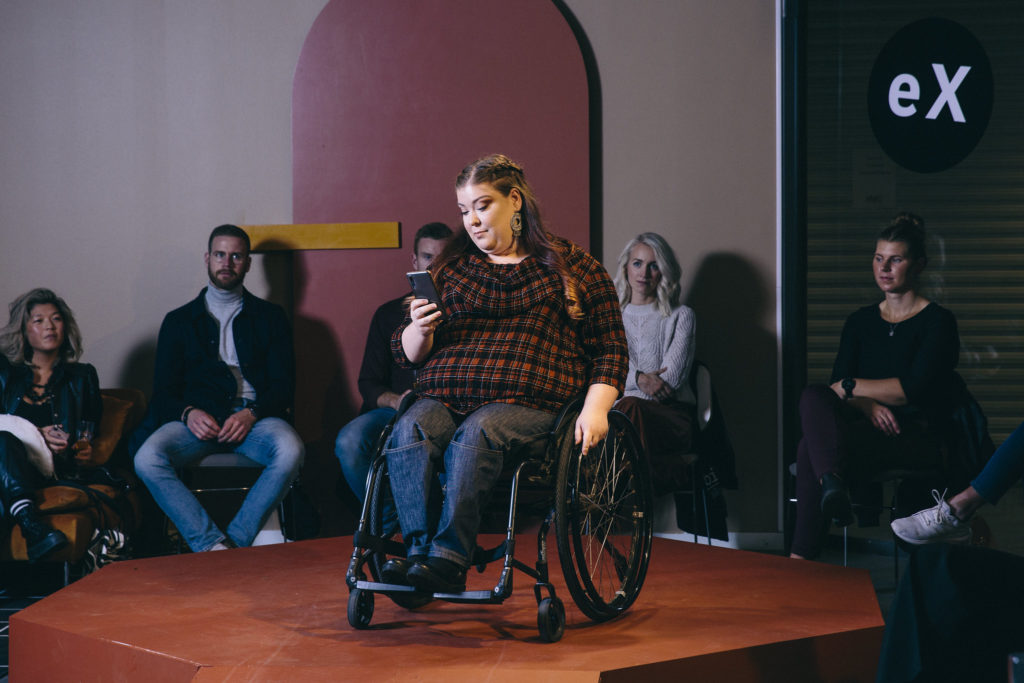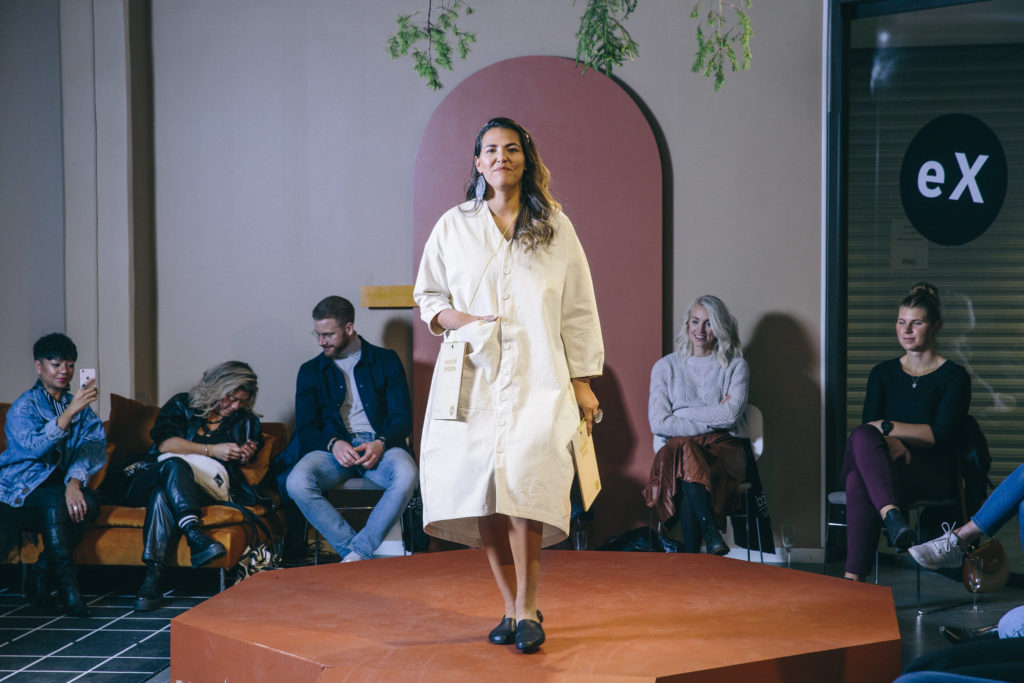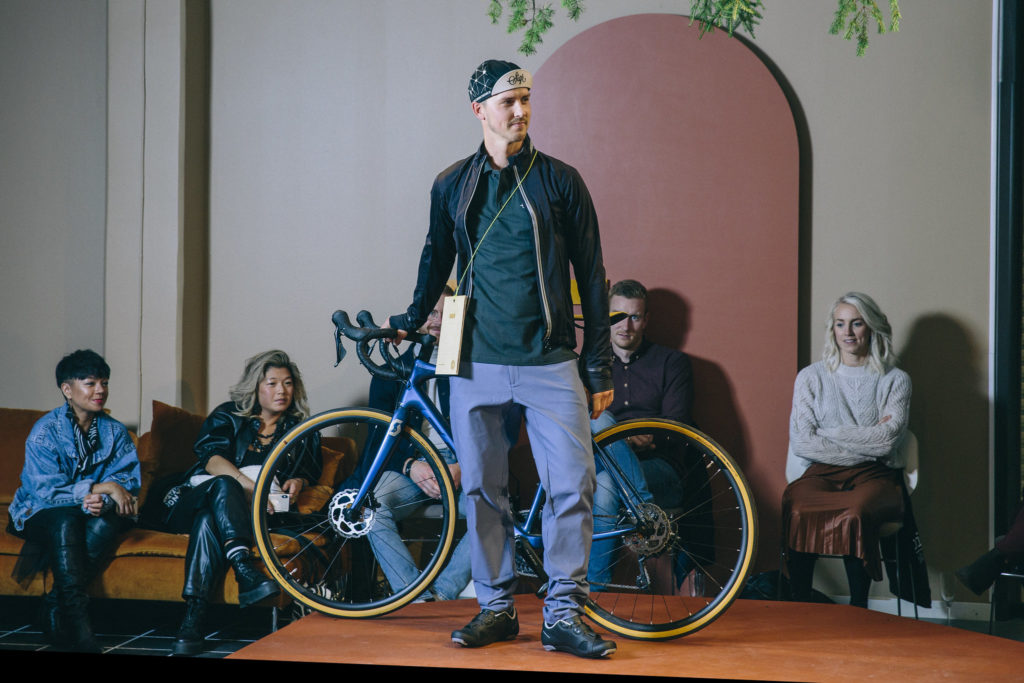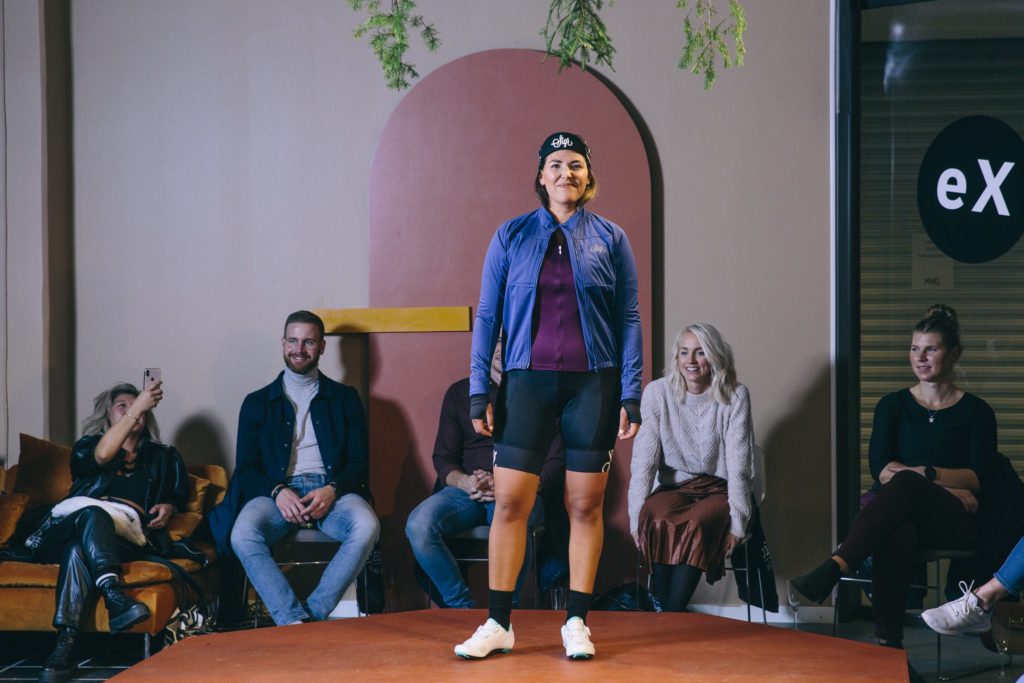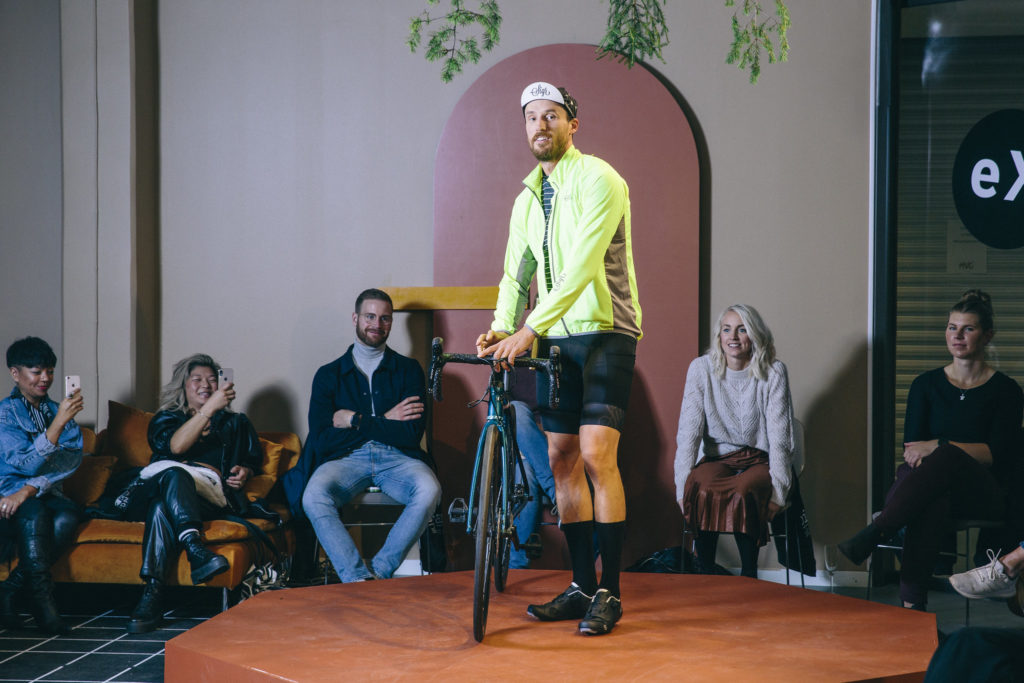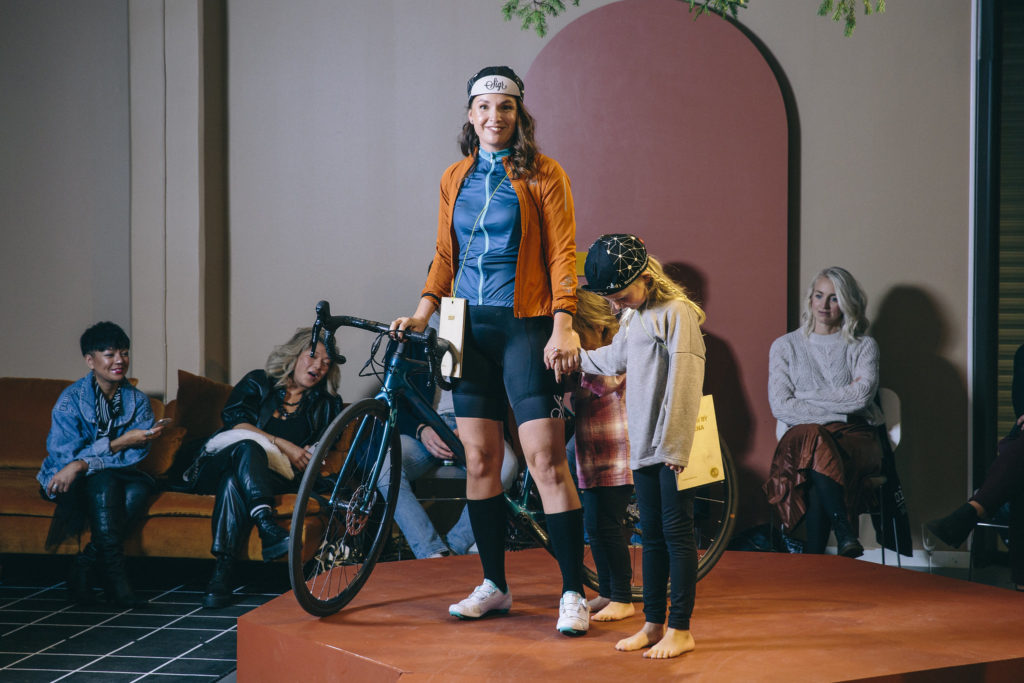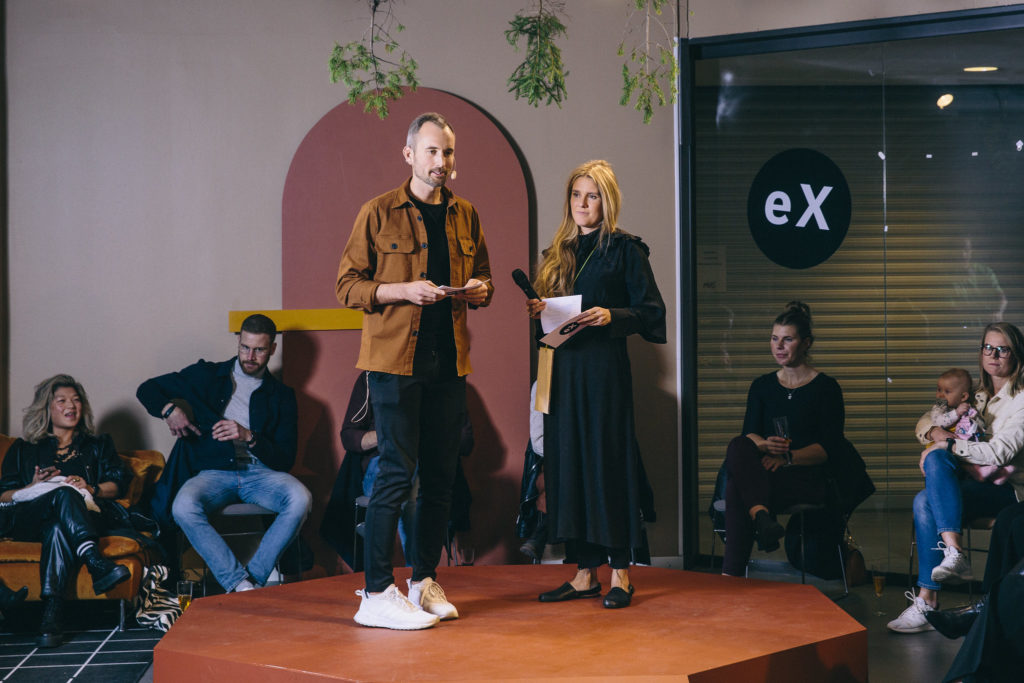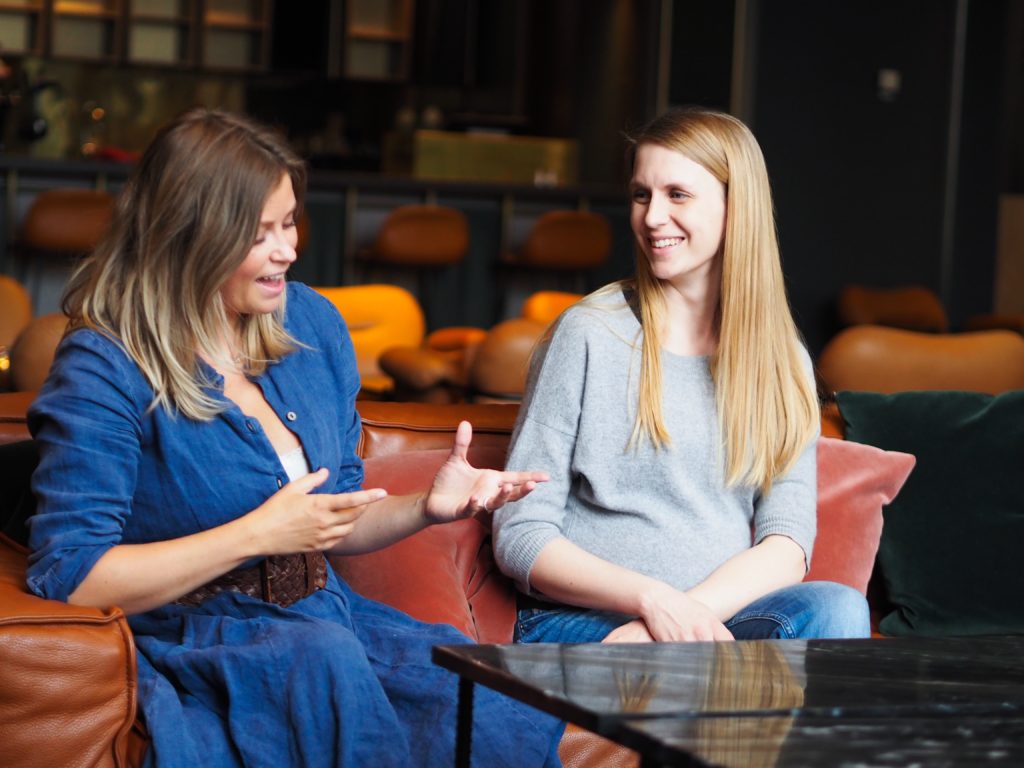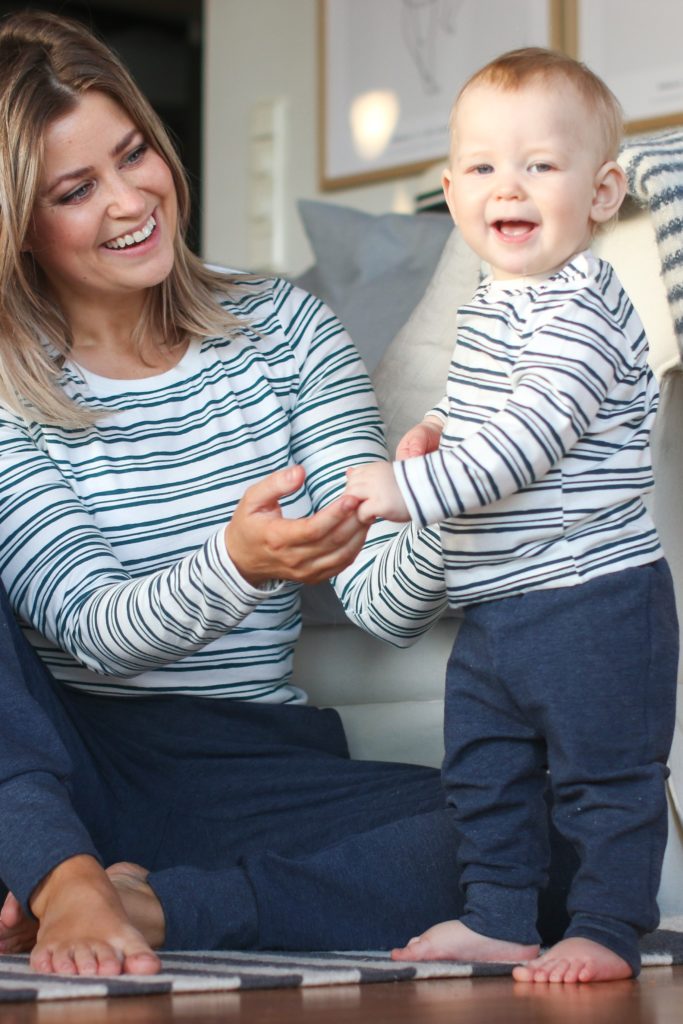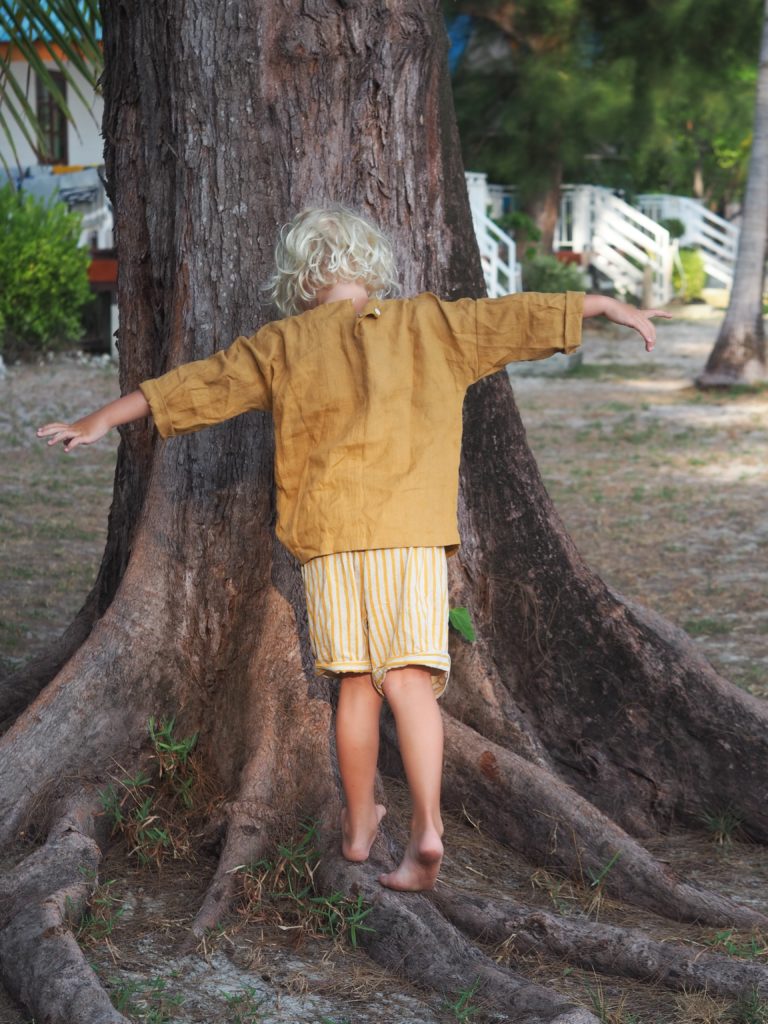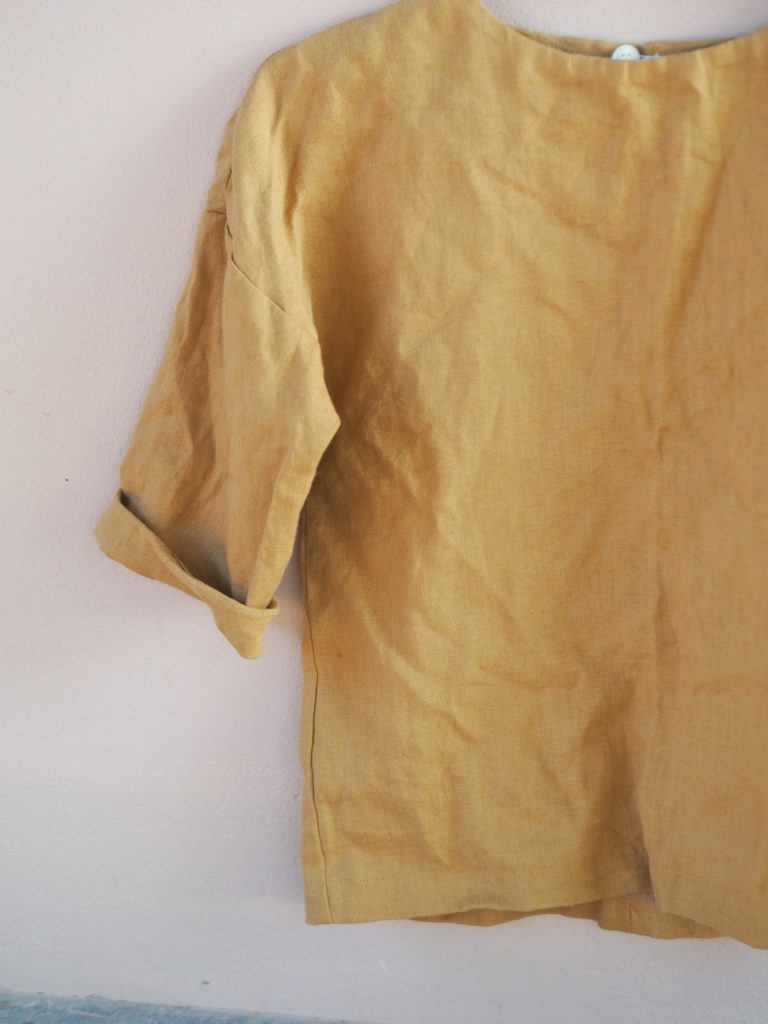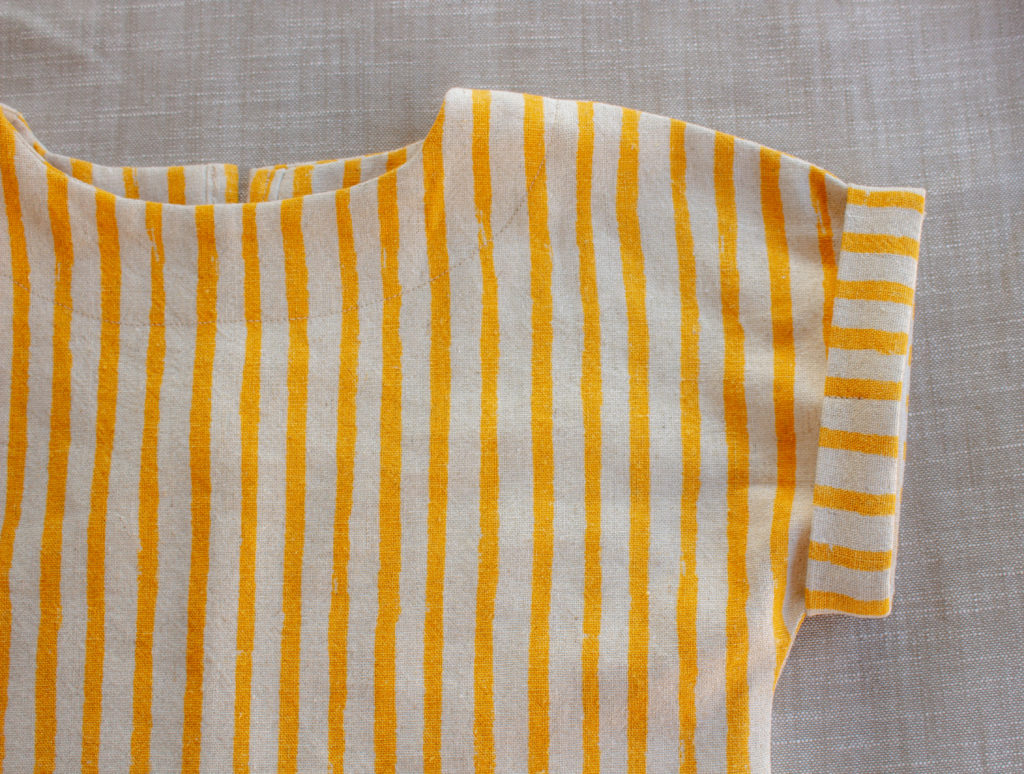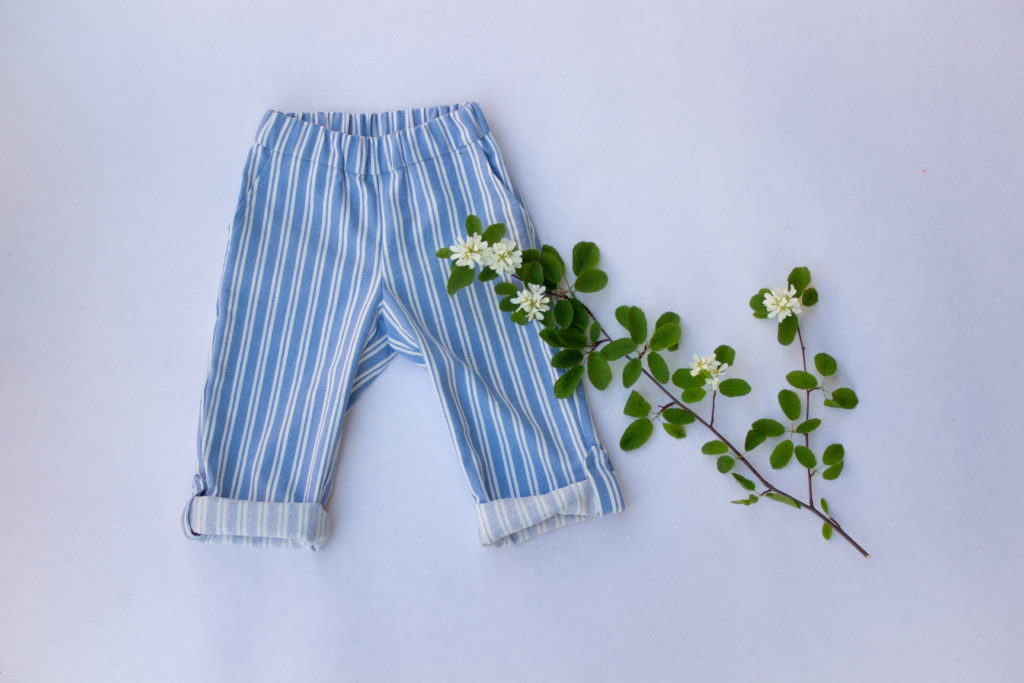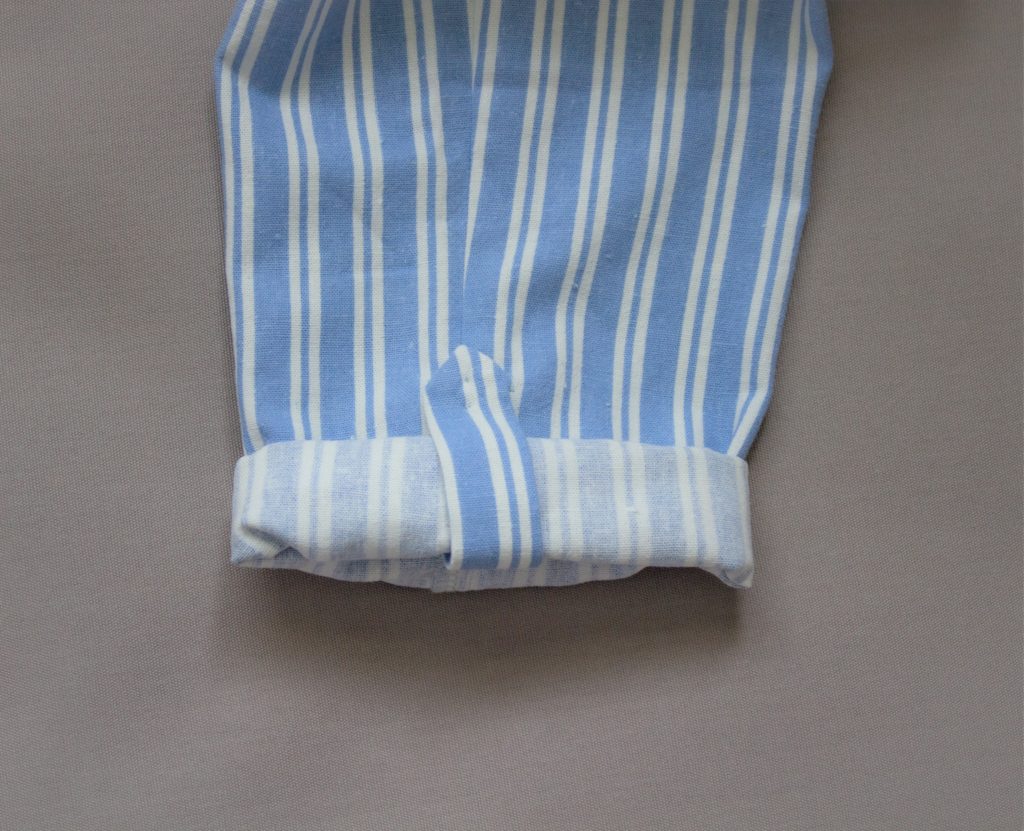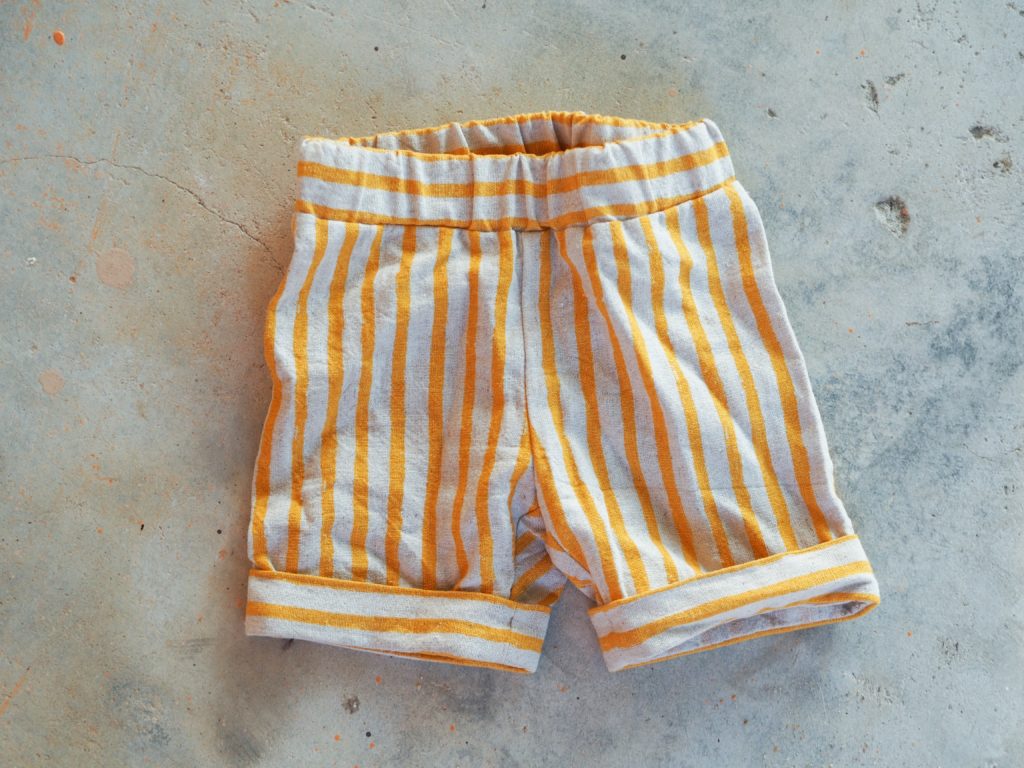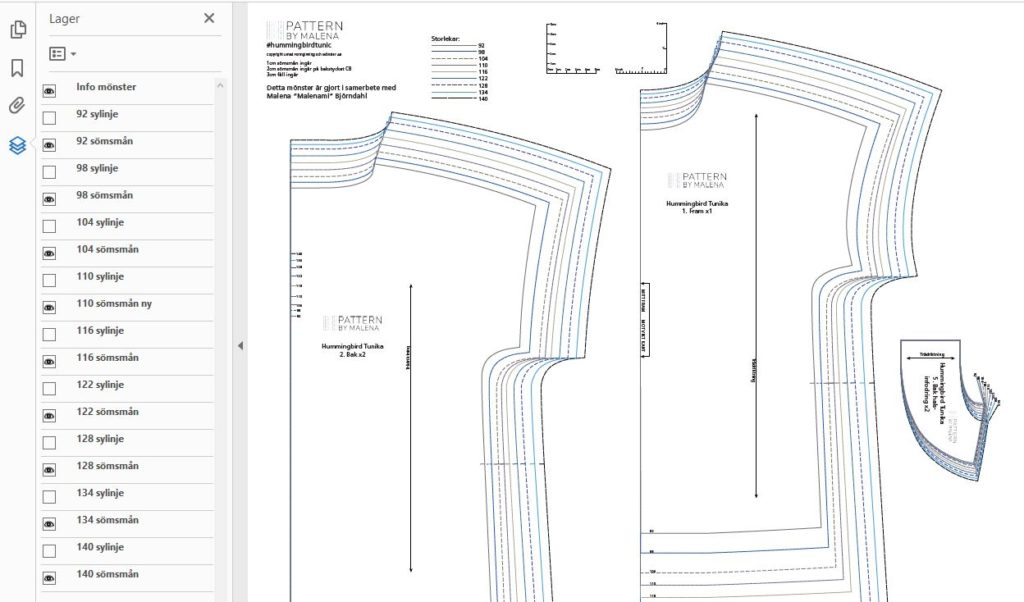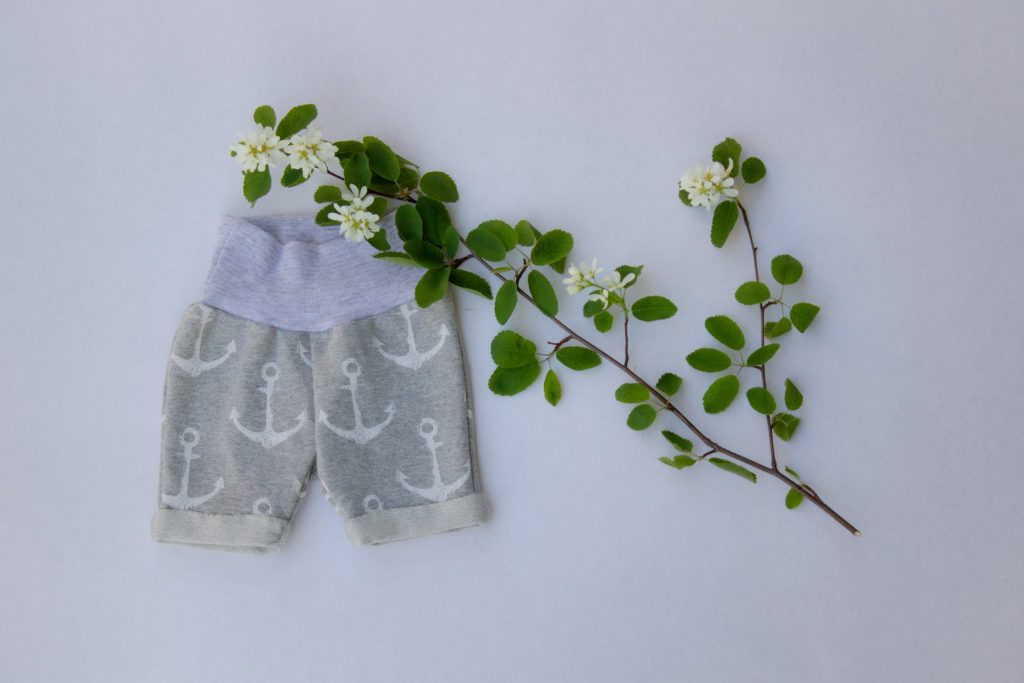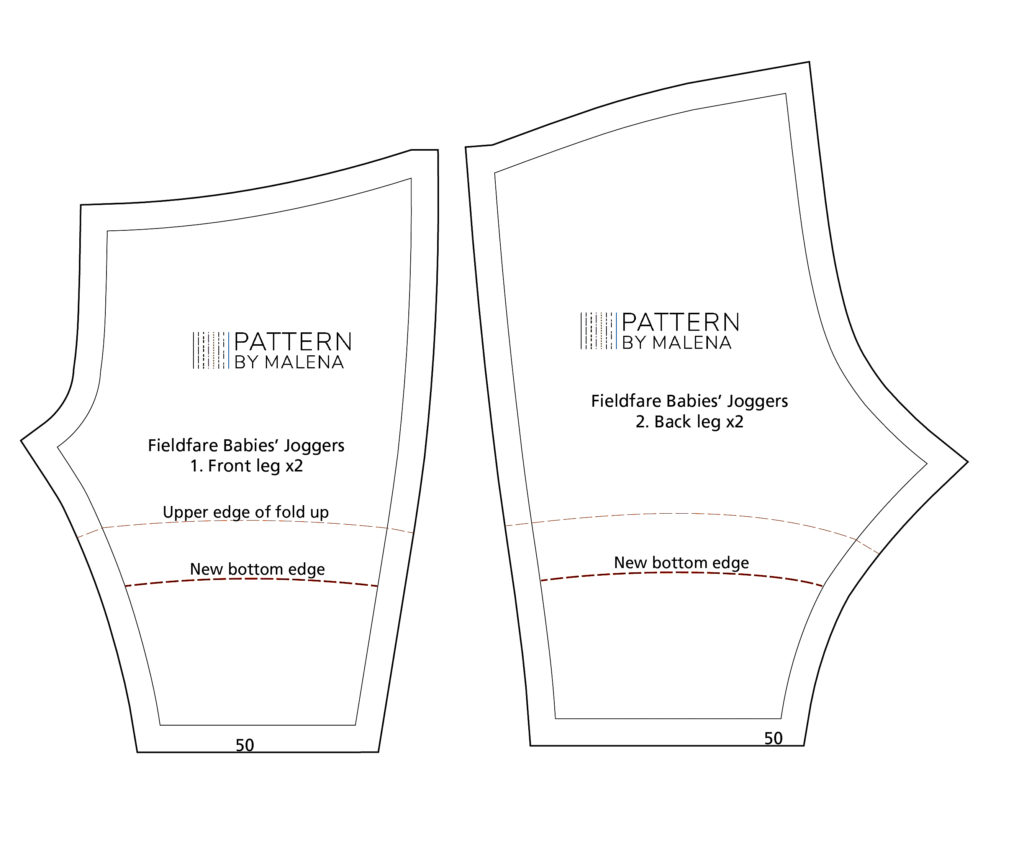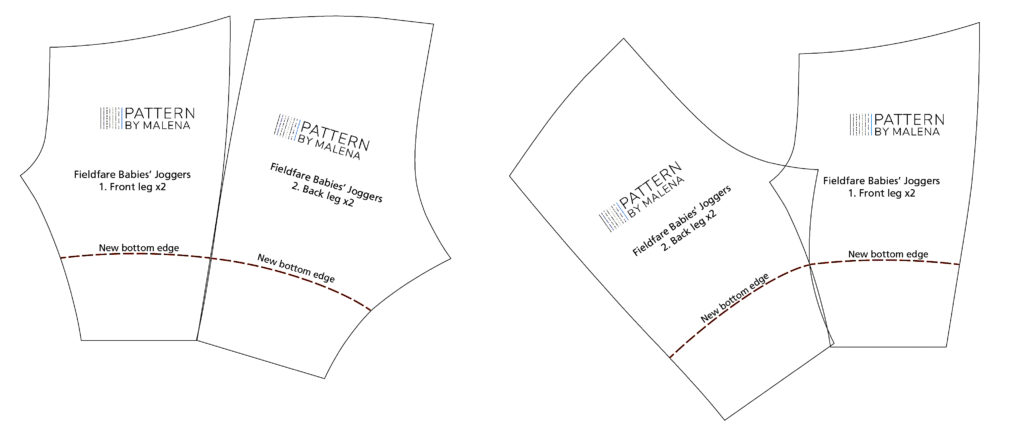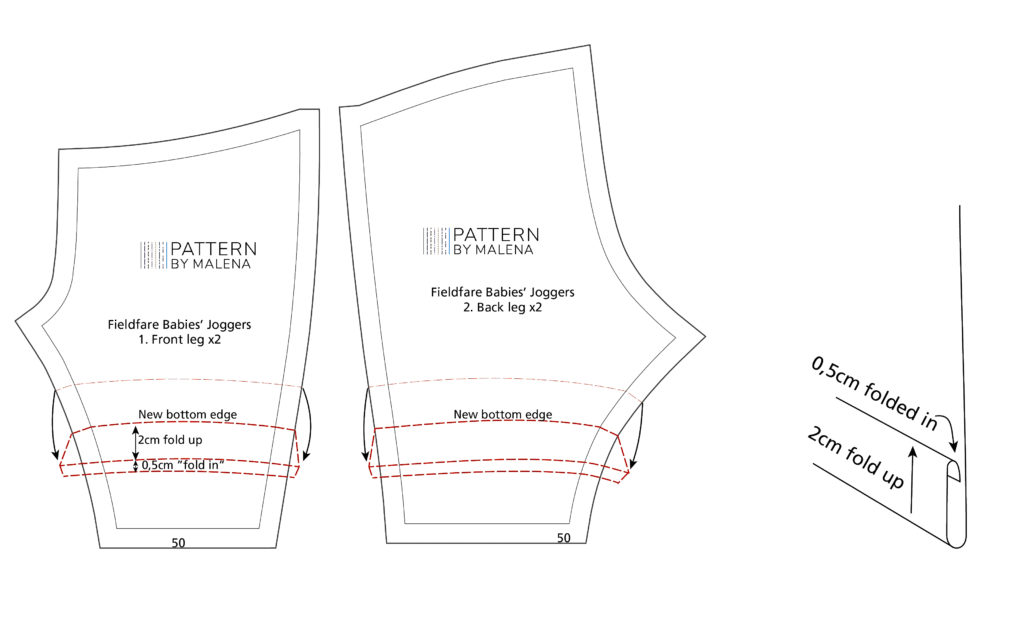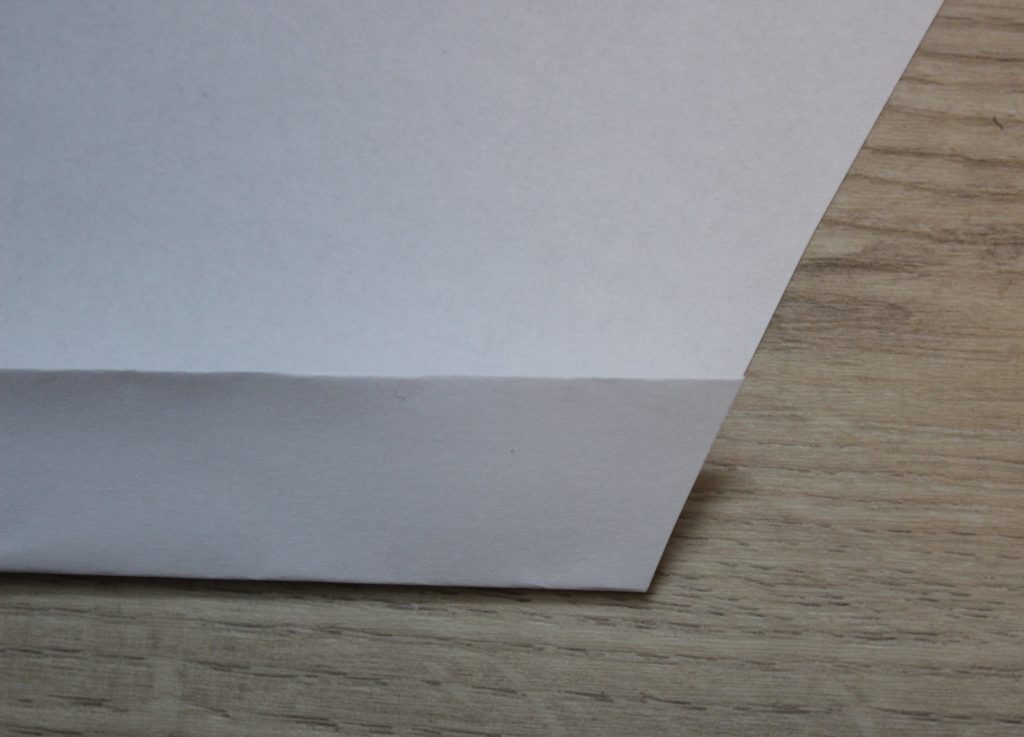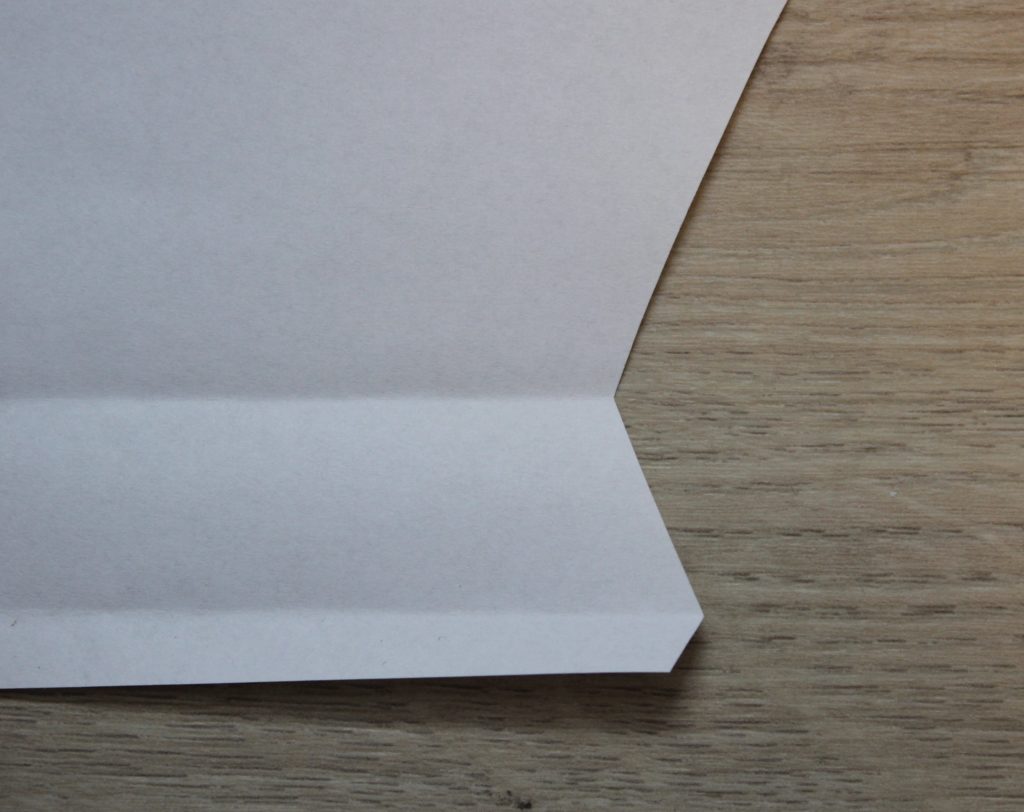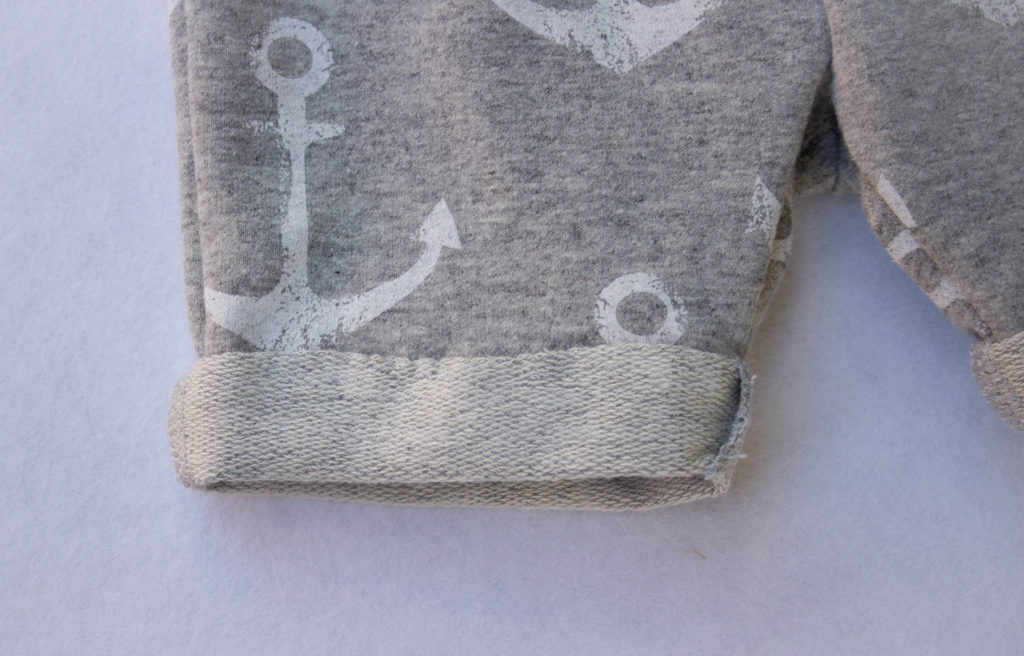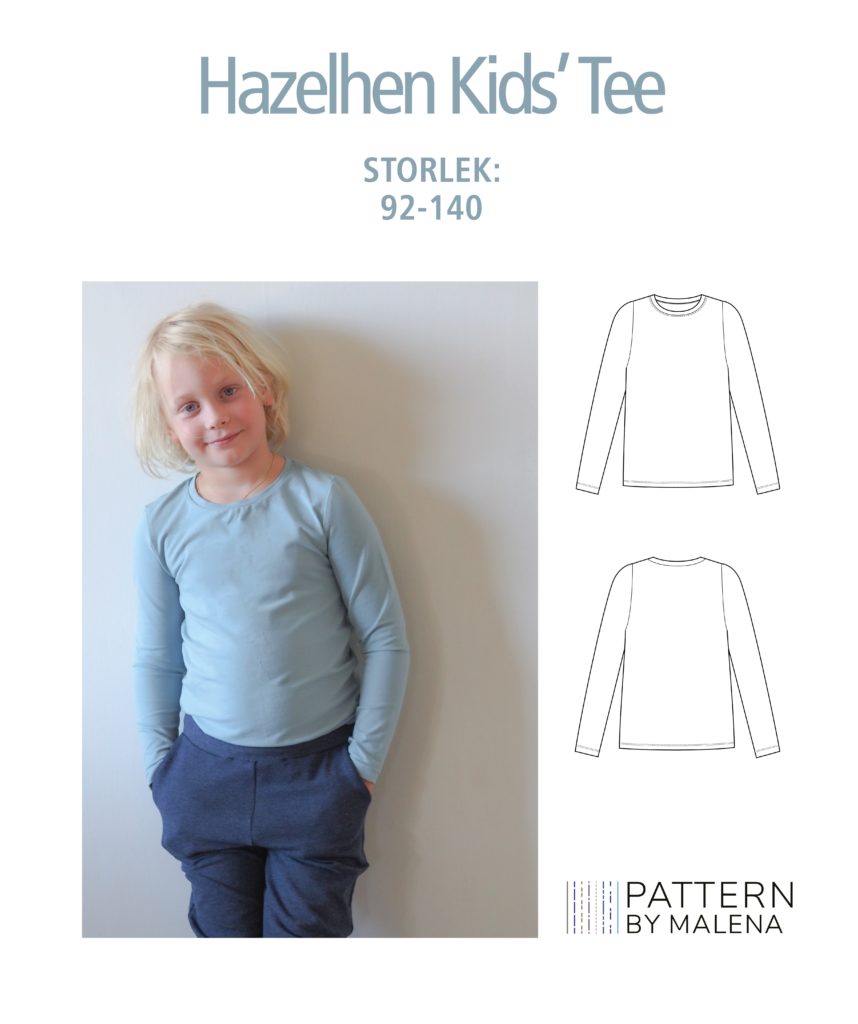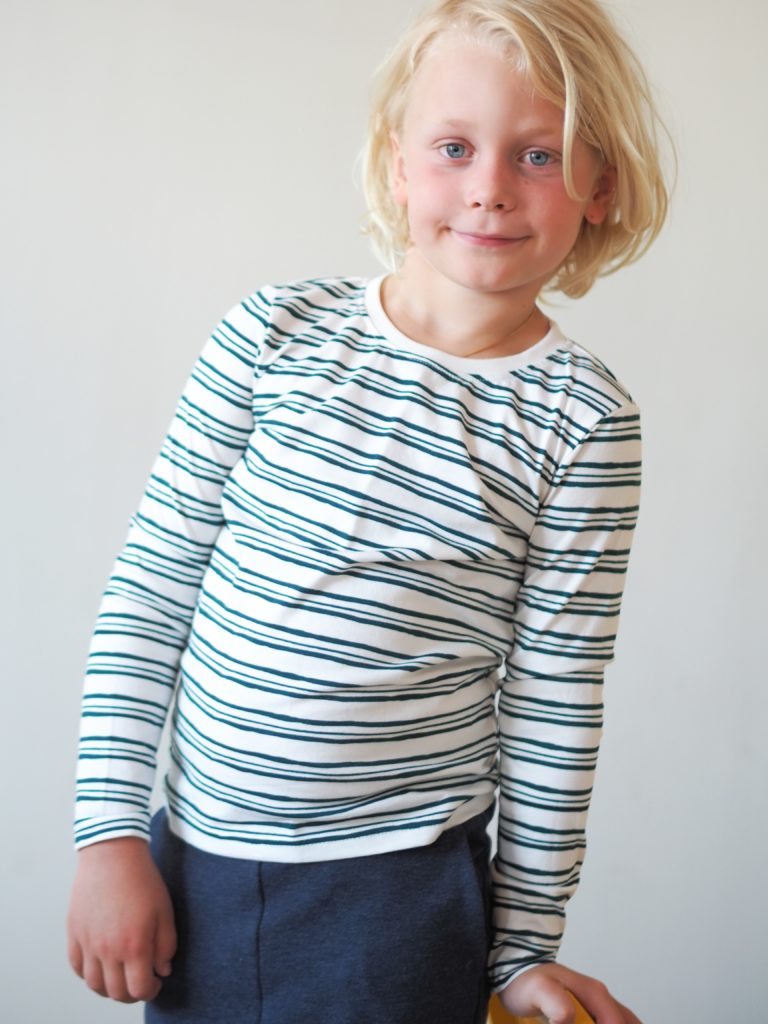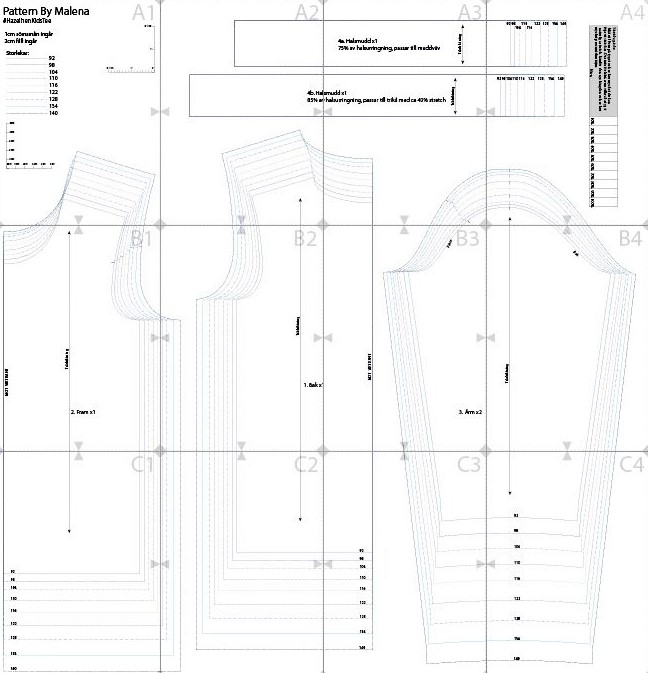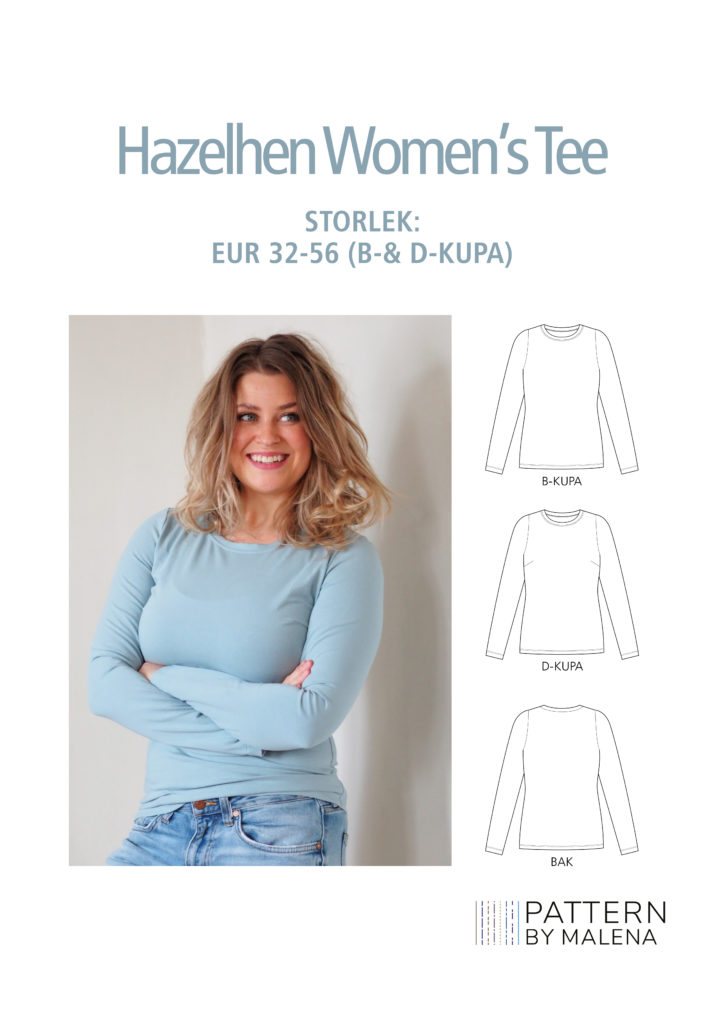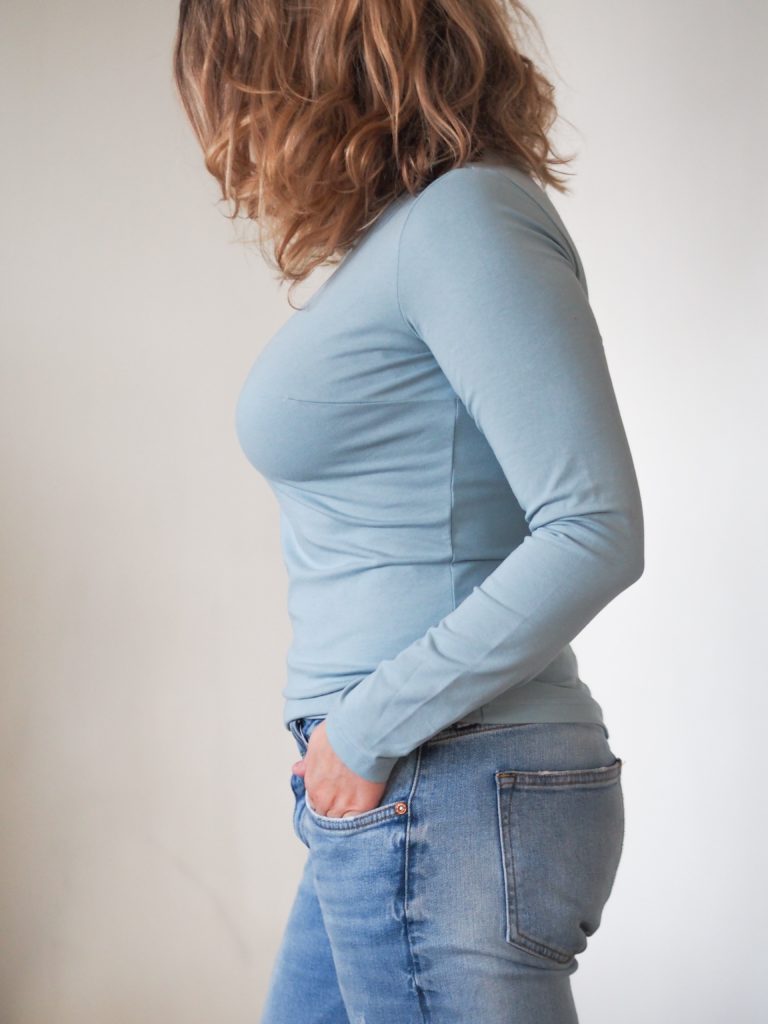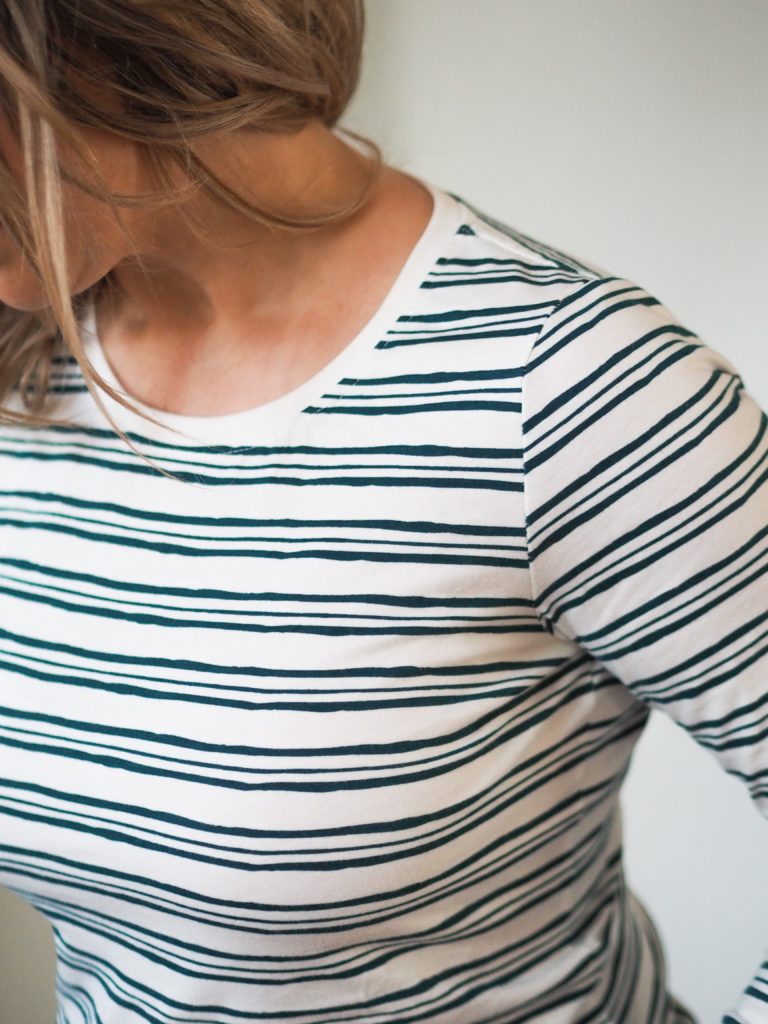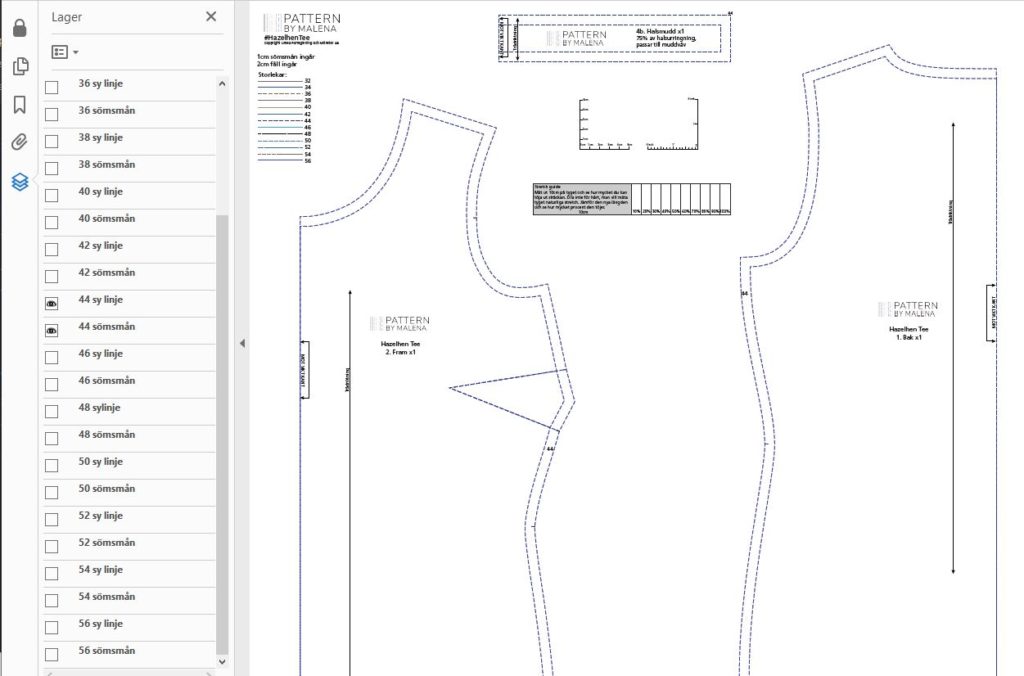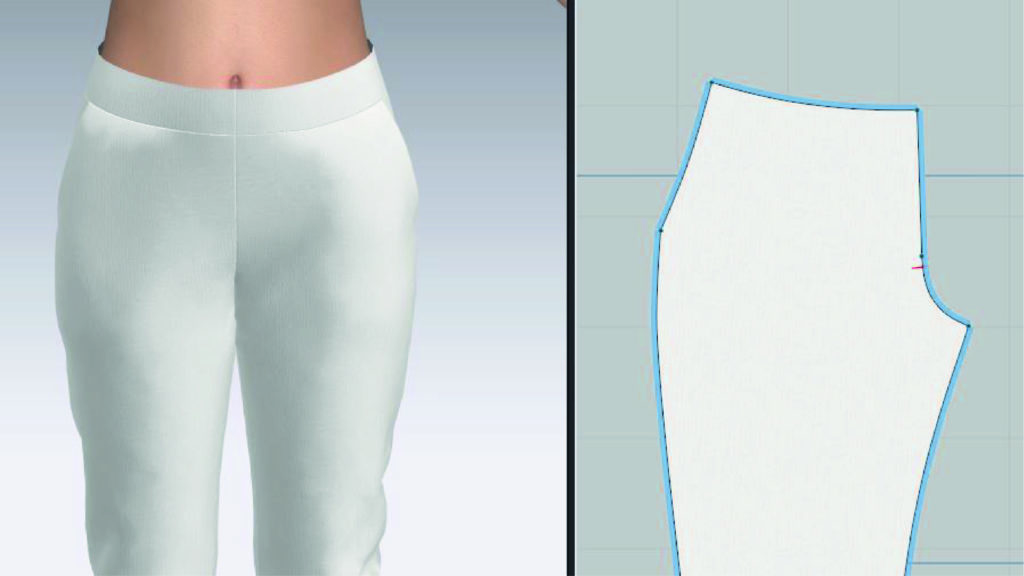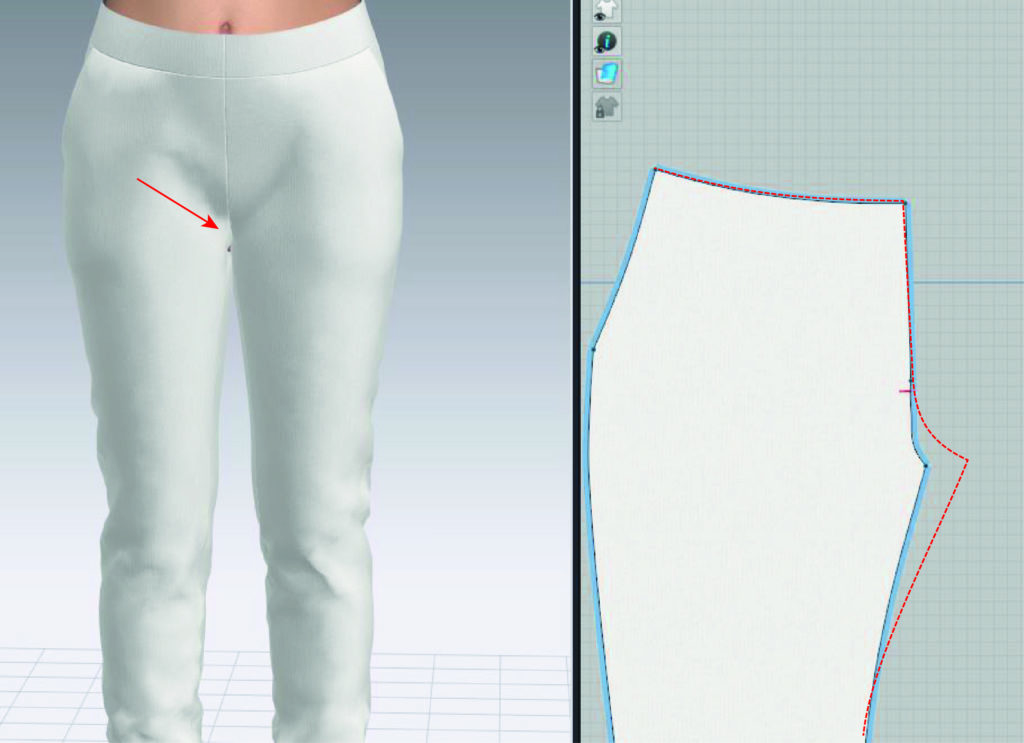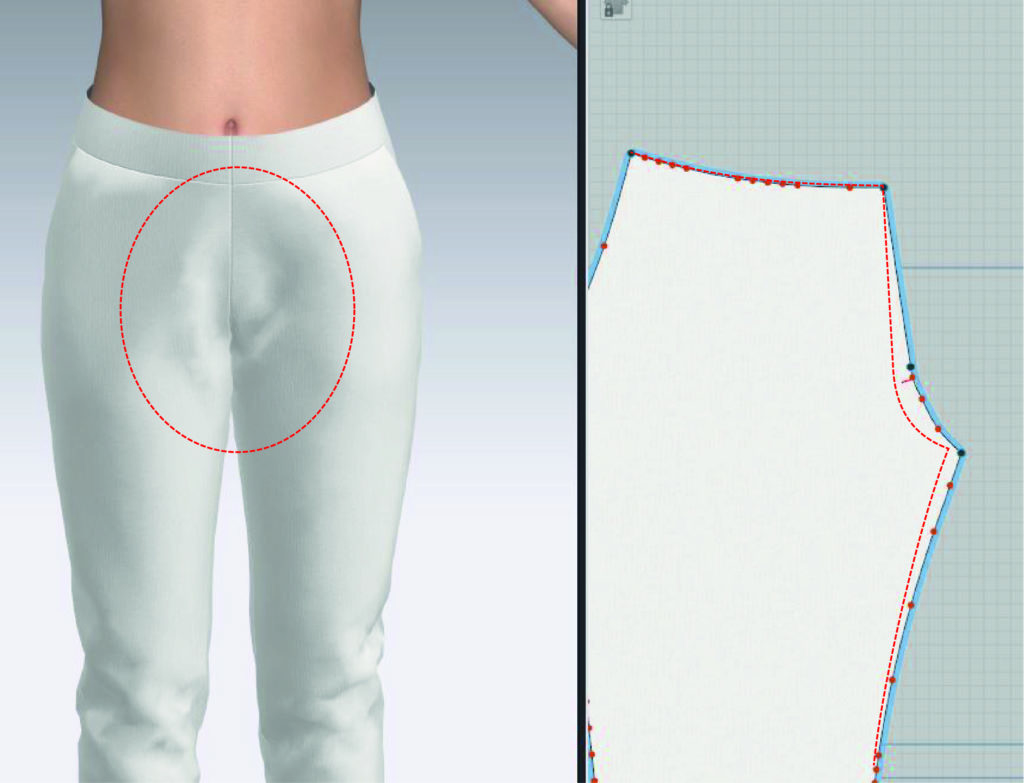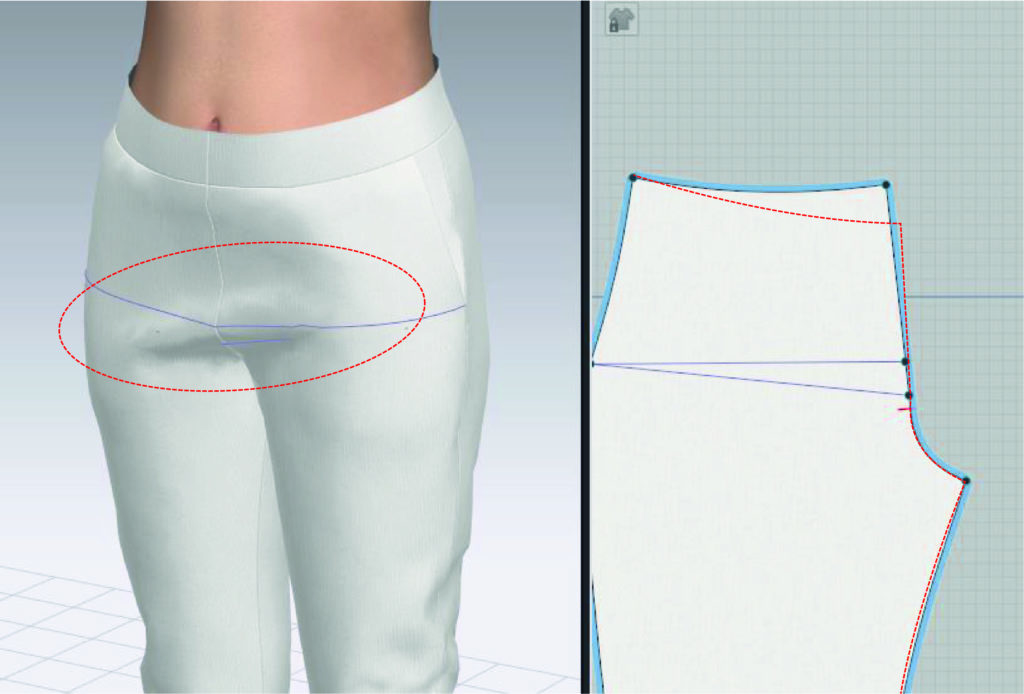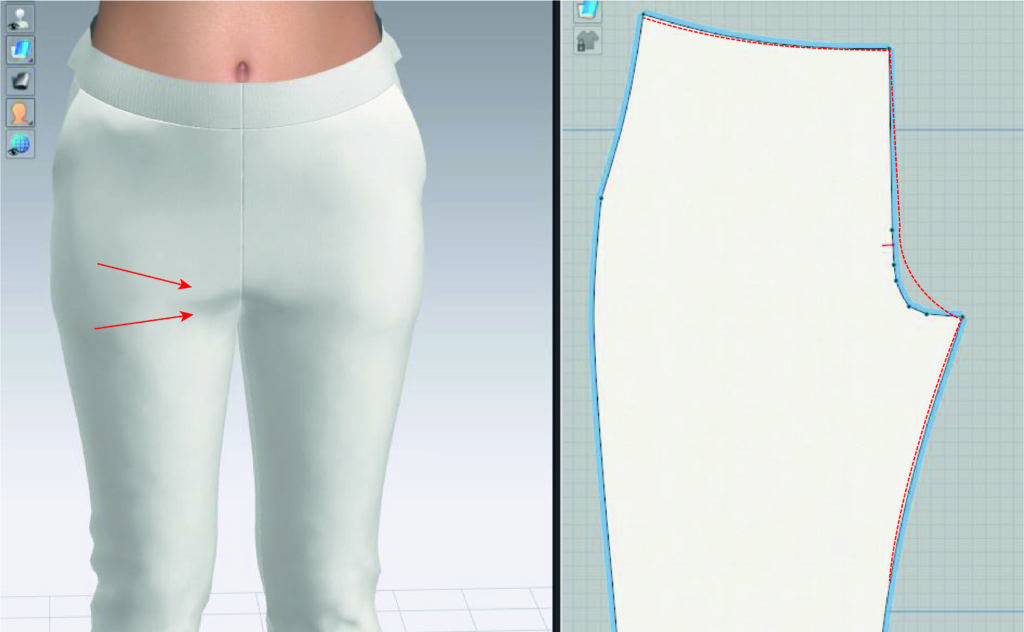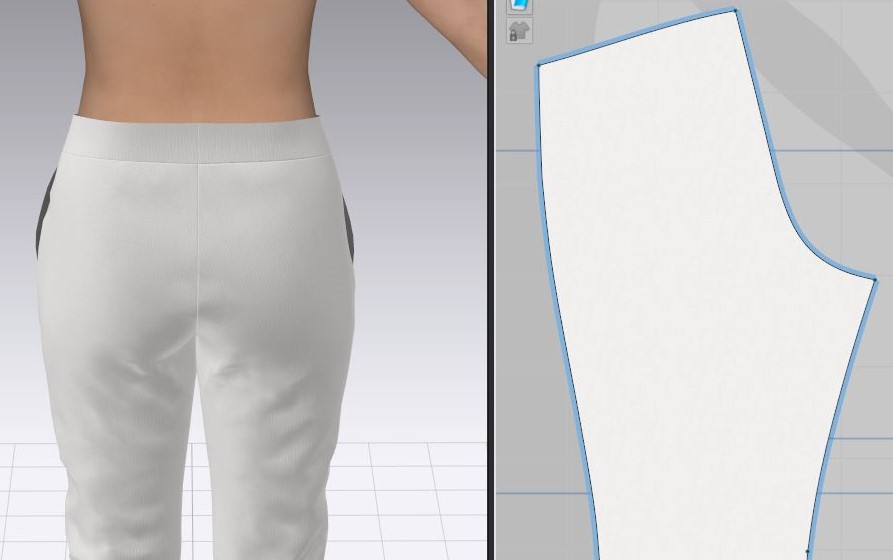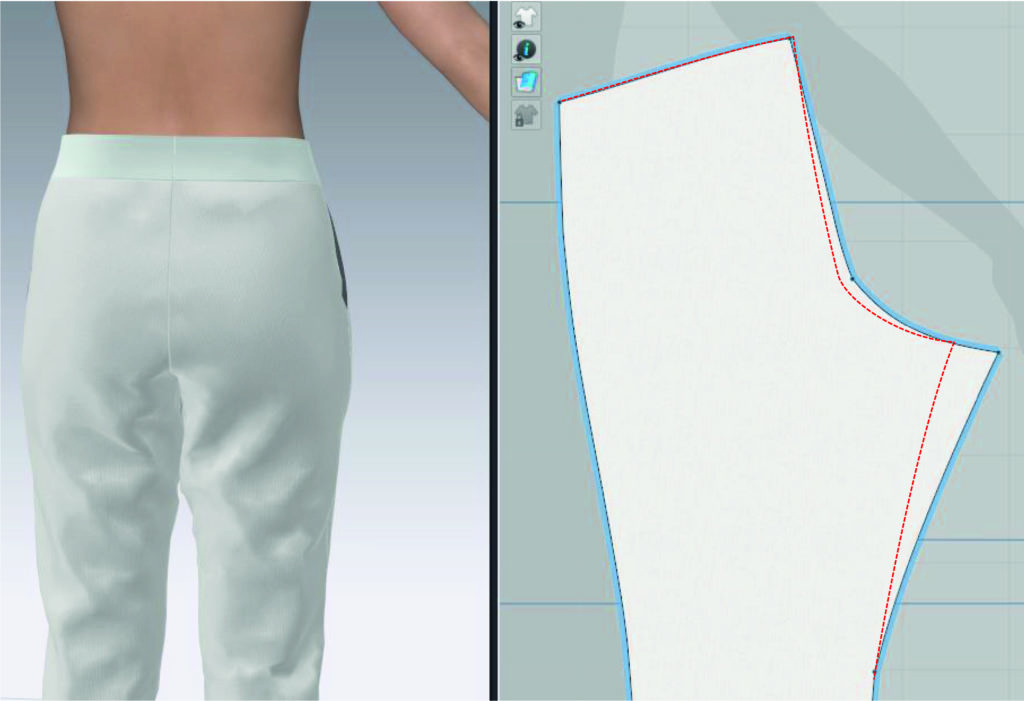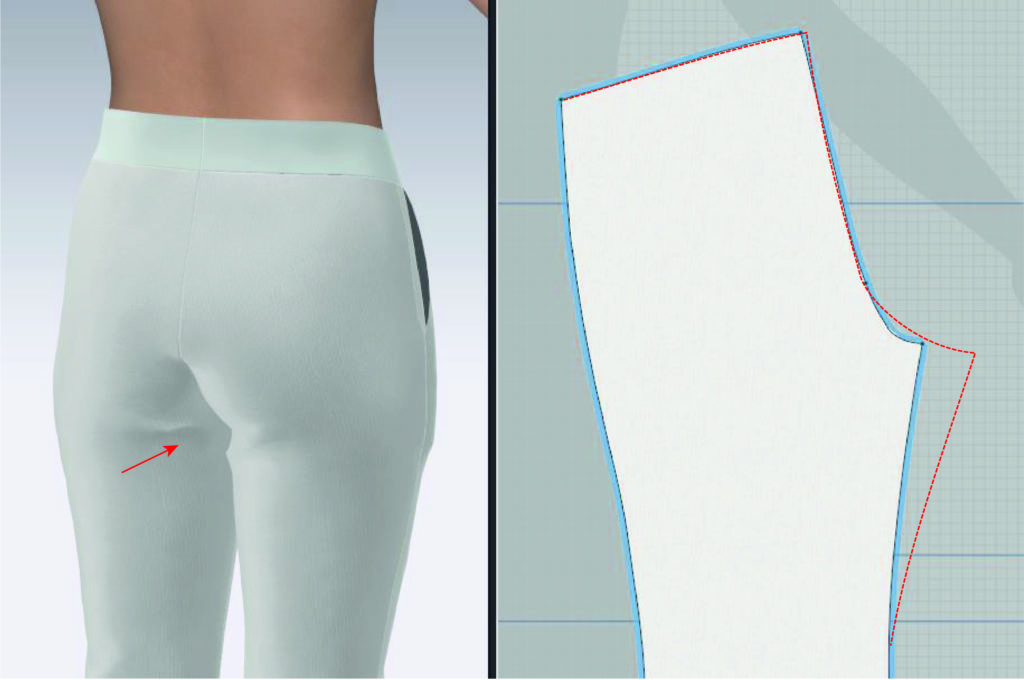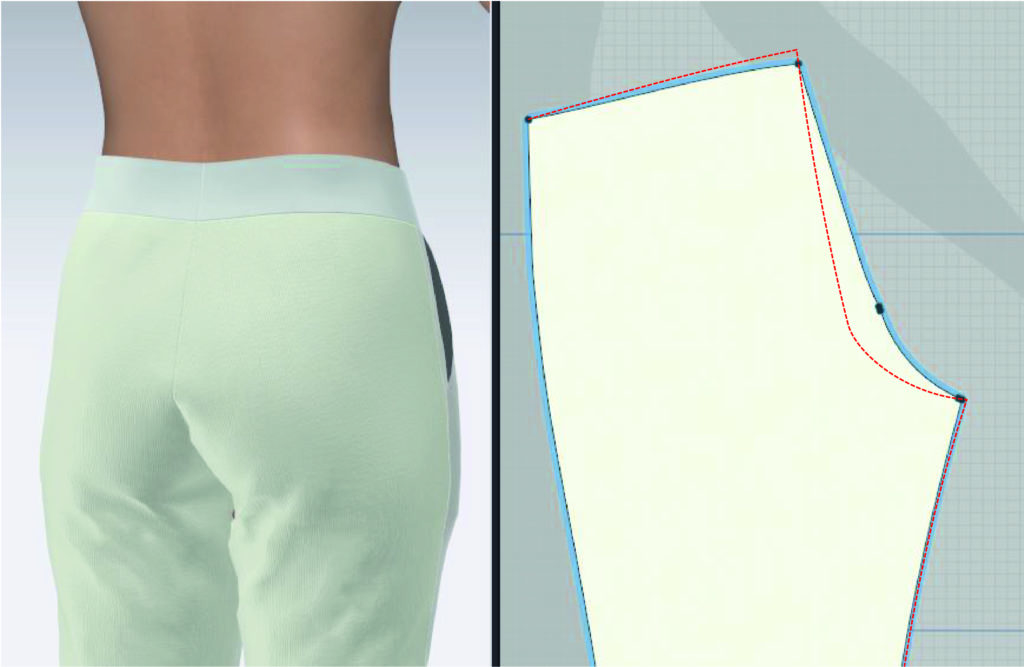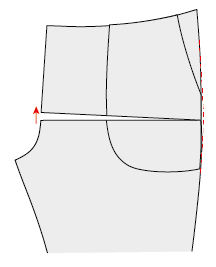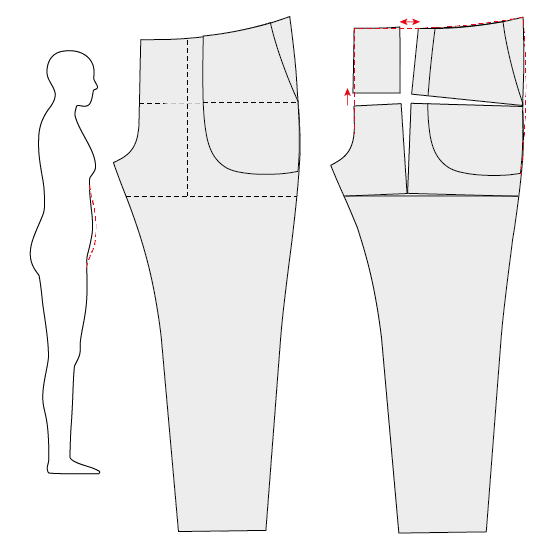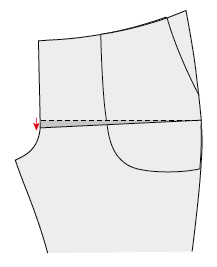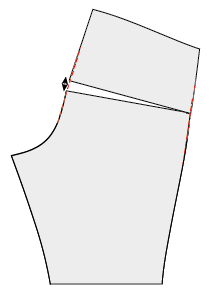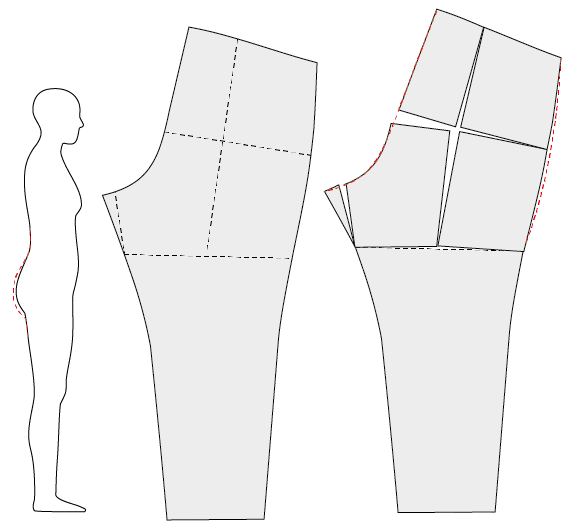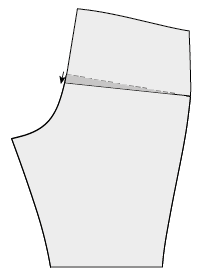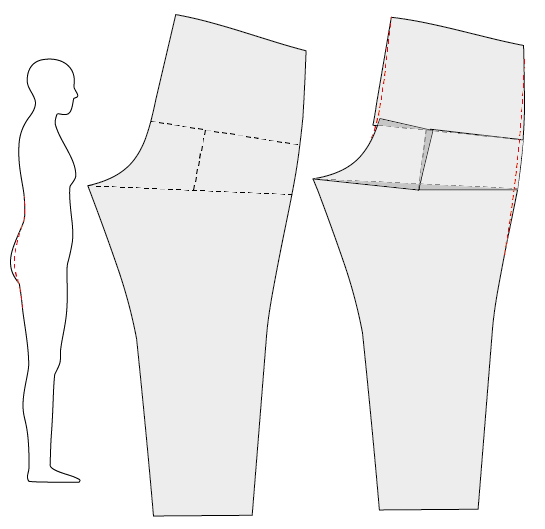I’m trying a new way to illustrate fitting problems! I’m still a beginner in this program, so I hope you can bear with me that some of the pictures are not so clear… Some of the pattern images are also quite exaggerated to make the problem appear on the 3D image, but I hope you understand what I wanted to show!
Fieldfare joggers crotch – front
This is how the regular crotch looks on my Fieldfare joggers. I’ve used this as a starting point and then adjusted the pattern in a “bad” way. The avatar body is the same in all pictures (you can change the body in the program as well, but I need to learn more how to do that….). The red dashed line on upcoming pictures shows how the original pattern looks like.
Too short crotch – front
The tip of the crotch is too short and the fabric is pulling downwards towards the crotch. The front rise is too close to the body, it needs more width in the front.
Too much fabric in the crtoch – front
Loose vertical creases appears at the lower part of the crotch. The issue is that the angle of the front rise is too sloping and the crotch point is too far out, there is too much fabric in the front. The easiest way to see how much you should remove is to first pin away the fabric when you fit the trousers and then on the inside sew by hand the new crotch line and fit the trousers again to see if the adjsutment was good.
Crotch length is too long – front
There is extra fabric at the crotch. You can see in the picture of the pattern that I added a “wedge”. This causes the front rise to become too long and the upper half of the front rise to be too angled . When you fit trousers it feels like you want to “pinch away” a pleat in the crotch or “lift up” the waist for the crotch to fit better. I also showed this adjustment in a previous post that was about increasing / decreasing width at the tummy and seat.
The crotch curve is cutted too deep – front
In the 3D picture, this fit issue may look a bit similar as to the previous picture. The difference is that on the previous one, the fabric created an “extra pleat” that you wanted to pinch away. In this case, the fabric is pulling from the thigh towards the crotch (like whiskers) which means there too little fabric (it’s too tight). The crotch curve is too deeply cutted and therefore the fabric is pulling towards the crotch.
Fieldfare joggers crotch – back
Here is the original shape of the back pattern piece of the Fieldfare joggers.
Too long crotch point – back
The crotch point is too long. The width at the seat looks pretty good, but there is too much fabric under the seat and it creates creases at the crotch.
Too short cortch – back
In this picture, the crotch length is too short and therefore fabric starts to pull up towards the crotch. It’s not so clear on the 3D image, but the fabric is pulling from the thigh and up towards the crotch point.
Too short and straight crotch – back
In “The Great British Sewing Bee”, they talked in an episode about “the hungry bum”. I think that is a very good description for this problem, the fabric wants to move up and “eat” the bum. The back rise is too short, both at the top and the shape is also too straight, ie it is not enough “rounded” or scooped out at the bottom. If you notice this during the fitting, you can easily sew a new back rise shape by hand that is more curved, and then try them on again. You can also see that the waist in the middle back is not really straight, a small V-shape is formed at the back rise seam. If you see this (may also be in the front) you can move up the waistline a little and also check that the angle is 90 degrees.
The last two pictures are both showing a too short back rise where the fabric “wedges in”. How do you then know which change to make? It doesn’t show very clearly in the picture where the crotch point is too short, but then the fabric is pulling up towards the crotch and it is tight under the seat. In the last picture, vertical folds are formed (or perhaps more sloping from the side of the seat towards the inner thighs), ie the creases have a different direction. There is too much fabric in the lower crotch that you want to “scoop out”.
Good luck with your fitting adjustments!
